- Destinations

Osaka Travel Guide
Day trip to mount koya from osaka: a trip to japan’s sacred peaks.
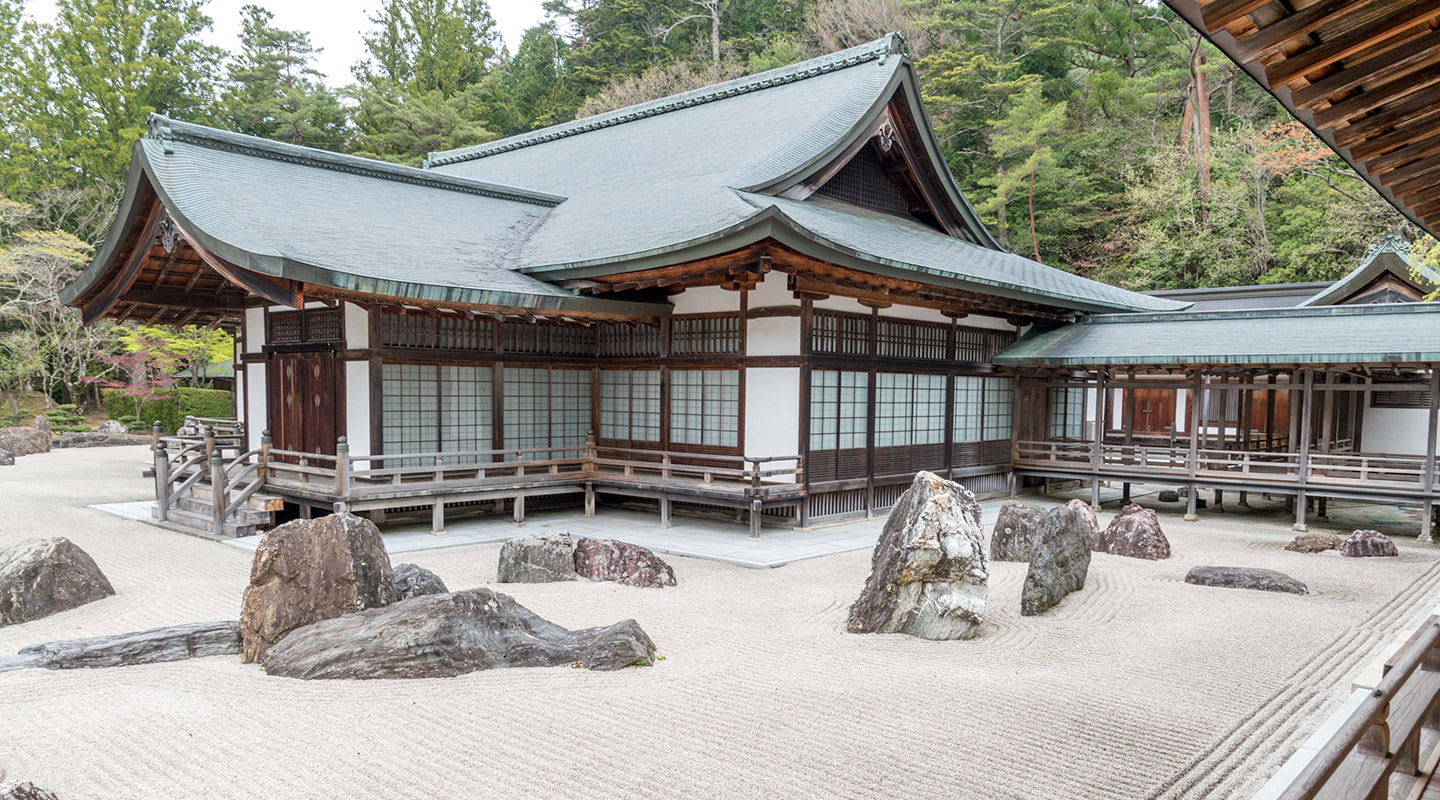
Enveloped in mystical forests and echoing with centuries-old chants, Mount Koya (Koyasan) is the heart of Shingon Buddhism in Japan. Located in the wilderness of Wakayama Prefecture, a day trip to this UNESCO World Heritage site from Osaka promises an experience of serenity, spirituality, and natural splendor. Here’s your guide to navigating this revered mountain.
Getting to Mount Koya from Osaka:
Begin your spiritual journey on the rails. The Nankai Electric Railway from Namba Station in Osaka to Gokurakubashi Station at the base of Mount Koya is your best bet. From there, take the Koyasan Cable Car uphill. Once you’re atop, buses ferry visitors to various parts of the town.
Duration: About 1.5 to 2 hours.
Cost: Consider the Koyasan World Heritage Ticket. This all-inclusive pass (around ¥3,300) covers your round trip, cable car rides, and buses on Koyasan. More Information .
Summary based on multiple reviews from travelers who visited Nankai Rinkan Bus Koyasan Office:
- Expensive ticket price compared to other buses in Japan.
- Infrequency of bus operations, which can result in missed opportunities to explore more.
- Bus routes to major tourist spots including Koyasan and Kondo-ji Temple.
- Poor customer service and unsatisfactory experience with bus drivers.
- Misleading stop information displayed on bus screen.
- Walking around Koya city is possible and doable due to the small size and proximity of attraction sites.
- The path from the Gokurakubashi station to the Koya-san’s precinct is a tough uphill hike, but can be considered to save on fare if tourists are physically capable and time permits.
- Day pass ticket allows unlimited bus rides which may be more cost-effective if you intend to travel more than 3 times in a day.
- The day pass tickets also come with discount coupons for restaurants, souvenir shops, and entrance fees to tourist spots like the Kondo-ji Temple.
- The ‘ride all you can’ ticket offered by Nankai Electric Railway which includes train and bus rides can be a cheaper option for tourists coming from Namba in Osaka.
- It is recommended to purchase tickets in advance due to possible high congestion in ticketing areas.
Morning Contemplations:
1. okunoin cemetery.
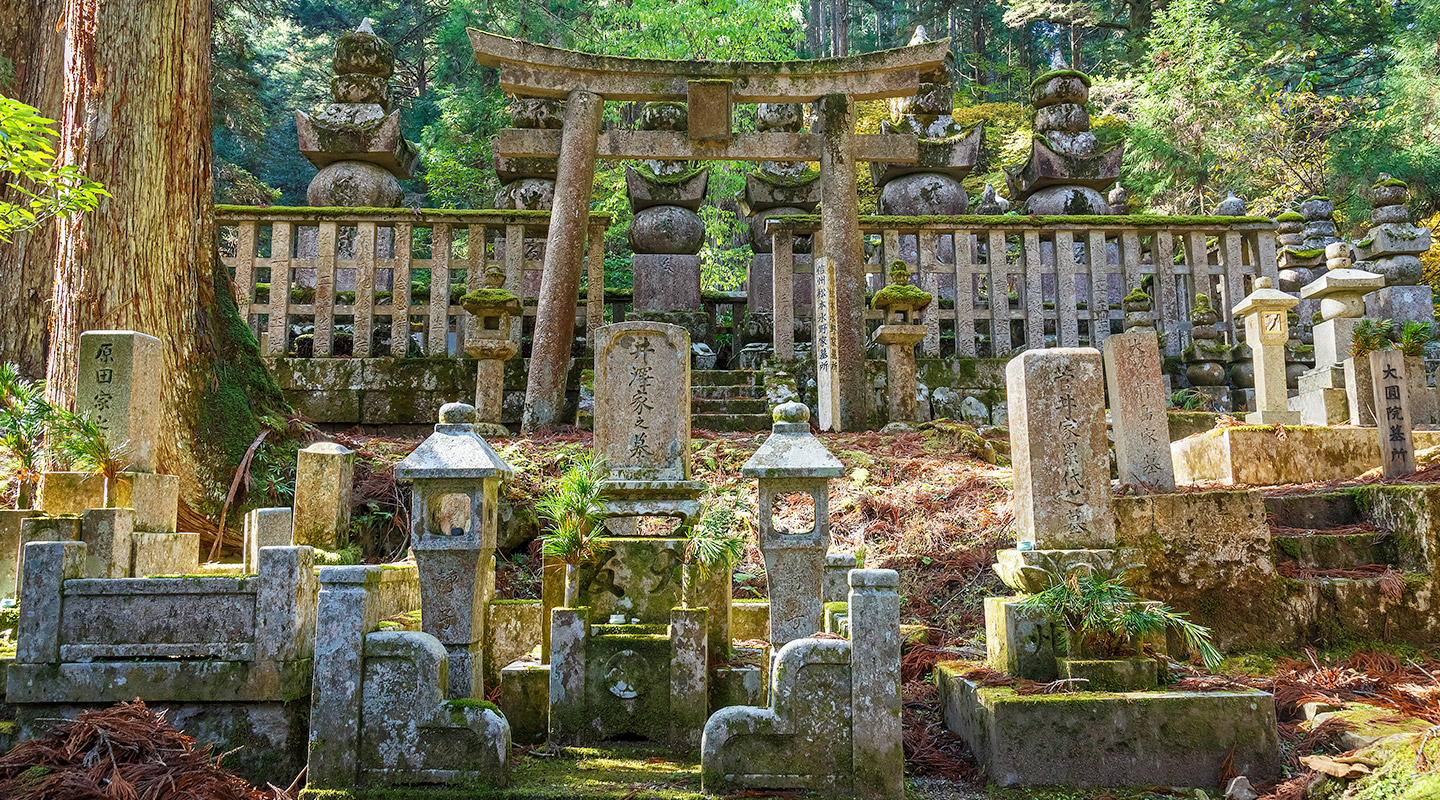
Begin your Koyasan journey amidst the towering cedars of Okunoin, Japan’s largest cemetery. This ethereal resting place houses the mausoleum of Kobo Daishi, the founder of Shingon Buddhism. As you tread the two-kilometer path, you’re not just walking amidst graves but narratives of faith spanning over a millennium.
Summary based on multiple reviews from travelers who visited Okunoin Cemetery:
- Enormous and spiritually significant cemetery.
- Constructed with the intention to commune with nature.
- Not initially built as a tourist destination, but it’s worth visiting.
- Location amidst a centuries-old forest.
- Graveyard that, according to Shingon Esoteric Buddhists, houses Kukai in deep meditation.
- Preserved graves of known and corporate figures, easily recognized through brand names.
- Astonishing and historically significant moss-covered tombs and statues.
- Hideyoshi’s memorial site.
- Location within a forest comprising towering, ancient trees aged between 200-600 years.
- Presence of untouched and old statues along the small dirt paths that branch off the main trail.
- Scenic beauty heightened by tall green trees surrounding the place.
- Authentic temple in Japan where monks live, conduct rituals, and prayers.
- Presence of a tower of Buddhas accumulated over the centuries.
- At night, the cemetery is illuminated by stone lanterns.
- Presence of ‘the house of the lanterns’.
- Best visited during dusk for better peace, magic, and spiritual energy.
- Visitor recommends staying at least 2 days and visiting during both day and night.
2. Torodo Hall (Lantern Hall)
Situated near Kobo Daishi’s mausoleum, this hall gleams with more than 11,000 lanterns. A sublime sight, these lanterns are believed to have been continuously lit for over a thousand years.
Summary based on multiple reviews from travelers who visited Torodo Hall (Lantern Hall):
- The main hall of worship, Toro-do, known for its numerous lanterns.
- The intriguing walk through the cemetery.
- The unique fusion of nature and temple architecture.
- The basement and other building full of lanterns, a distinctive sight not commonly seen in Japan.
- Stunning night walk through the woods/cemetery offering a unique experience.
- No photography is allowed inside the hall.
- The place closes at 5pm during the summer.
- There are 11,000 lanterns in the hall, most of which are donated by worshippers of Kobo Daishi. These lanterns are kept lit all the time.
- The hall’s basement contains 50,000 statues donated on the occasion of Kobo Daishi’s entrance into eternal meditation.
- Many Buddha statues and many trees make for a tranquil environment.
- The meiroku stone in a small temple after you cross Gobyono bridge offers a unique experience when lifted.
- Walking from the city center through the sanctuary to the temple is highly recommended for its magical experience.
Mid-day Meditations:
3. kongobuji temple.

As the head temple of Shingon Buddhism, Kongobuji boasts elegant sliding doors adorned with intricate paintings and the largest rock garden in Japan, called Banryutei. The temple exudes an air of solemnity and beauty.
Summary based on multiple reviews from travelers who visited Kongobuji Temple:
- The temple tends to be less crowded during weekdays so you can enjoy a peaceful and serene atmosphere.
- Be aware that though the place has great cultural heritage value, it may not be the best spot for photography.
- Interior artwork cannot be photographed.
- The fee for entrance is 500 yen.
- The temple is regarded as the ecclesiastical head of Shingon Buddhism.
- You can learn about Shingon Buddhism’s origin and its spread by Kukai.
- Several historical events have taken place here.
- The temple’s name interprets as Diamond Mountain Peak in Buddhism.
- It contains a well-preserved kitchen, decorated doors, and a rock garden among its architectural features.
- The temple features traditional Japanese architecture and offers a unique insight into Japan’s rich cultural heritage.
- Pay attention to the fusuma with various and sophisticated paintings inside the building.
- The Banryūtei rock garden is a must-see feature of the temple. Its arrangement of granite stones takes the shape of 2 dragons making it a unique attraction.
- During autumn, the rock garden assumes greater beauty.
- Remember to remove your shoes when entering the temples.
- You can purchase tokens for luck and request monks to sign your book at the temples.
Lunch Break: Satiate your appetite with Shojin Ryori, the traditional Buddhist vegetarian cuisine. This meal is not just about taste; it’s an art, a ritual, and an insight into the monks’ lifestyle.
Afternoon Awakenings:
4. kongobuji danjo garan temple and reihokan museum.
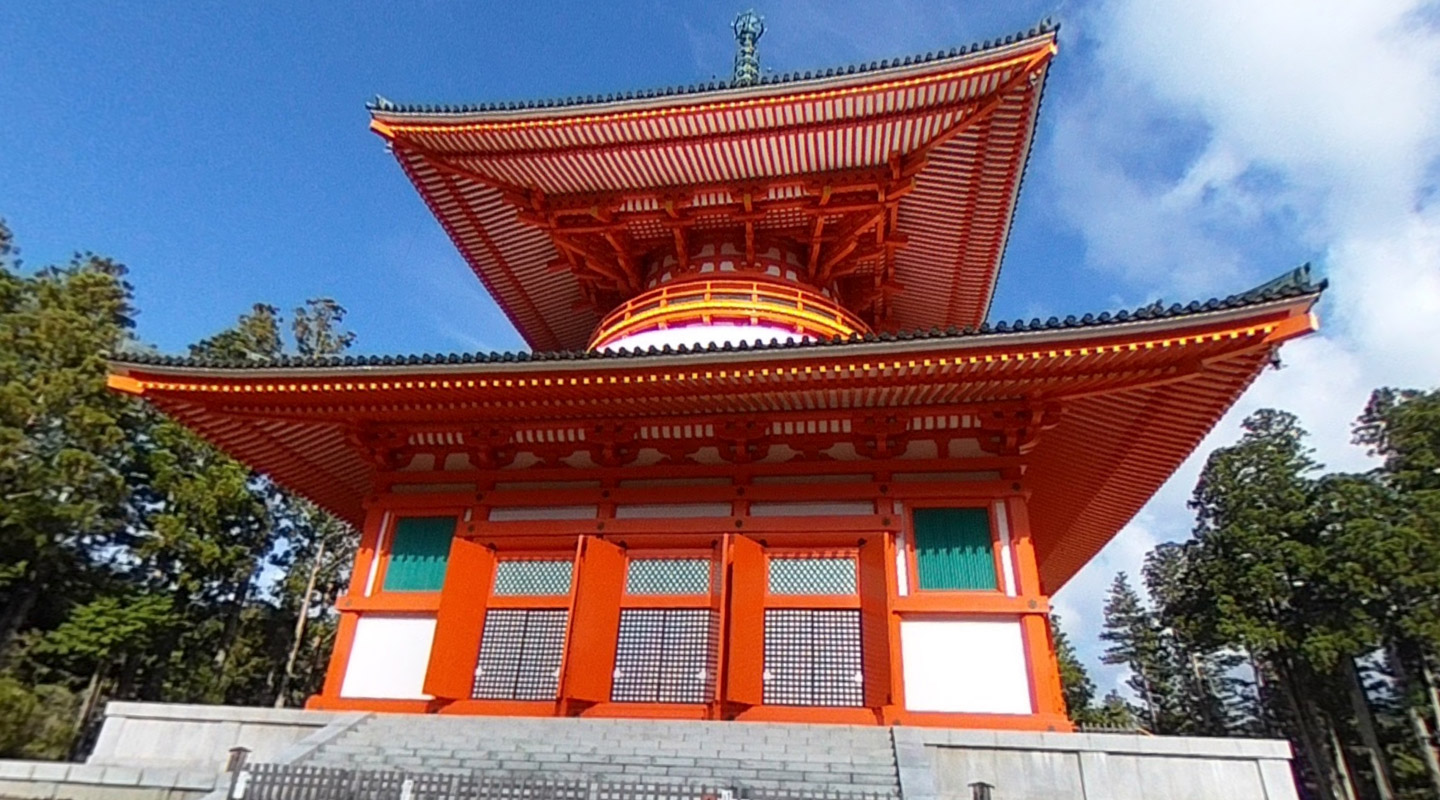
Explore these spots for a deeper understanding of the region’s religious artifacts and treasures. The museum houses scriptures, liturgical implements, and intricately crafted statues.
Summary based on multiple reviews from travelers who visited Kongobuji Danjo Garan Temple:
- Large complex with numerous temples
- English descriptions on signs near each temple
- Detailed decorations and carvings on the wooden temples
- Bonsho, or the bell that rings in the wind at the top of the pagoda
- Scenic views and beautiful surroundings similar to a giant bonsai garden
- Atmosphere is serene, especially with heavy mist
- Large and intriguing cemetery behind the temple and town
- Easily reachable from Osaka with a two hour one-way trip
- Nankai Line day pass available for foreigners
- Main landing point of tourist buses
- White bell tower and great pagoda as key highlights
- Local food such as Kochi available from vendors
- Insight into Japanese history and traditions
- Can be relatively deserted during off-peak seasons
- Peaceful and magical ambiance
- Open for early morning and night-time visits for different perspectives and views
- Much to see and explore, making it a rewarding experience
5. Daimon Gate
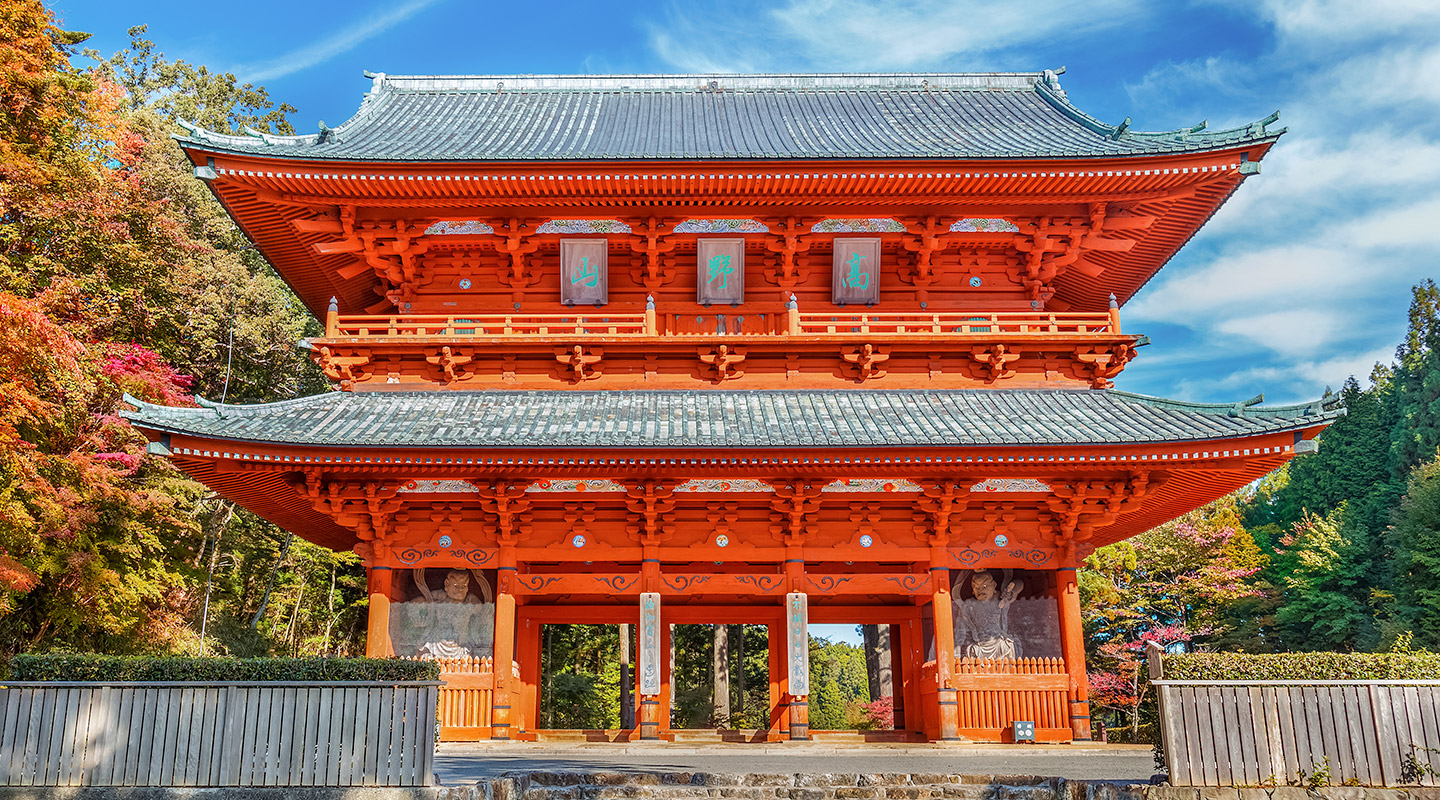
Standing guard at the entrance to Koyasan, this massive gate sets the spiritual ambiance of the place. It’s an iconic spot, symbolizing a gateway from the mortal realm to a sacred space.
Summary based on multiple reviews from travelers who visited the Daimon Gate:
- The gate is very grand and its huge size often doesn’t translate well into photos. It stands at an impressive 25 meters tall and is an iconic landmark.
- Despite its size and importance, it is one of the least visited places in Koyodan.
- Its structure is beautifully impressive and magnificent, providing a great start or finish point for your pilgrim route hike.
- There are fewer people around, offering chances to take good photos with no people.
- Easily accessible via a short walk from the city centre; it is also accessible by city bus when staying at Koyasan.
- There’s a small trail to go to the other side (Nyonindo) if you have time.
- Visitors who wish to see it can either trek there or take a bus.
- Good views across the road from the gate and the scenery across from it is very nice at sunset.
- It is situated in a very beautiful location, with lovely views of the valley.
- There is a wonderful view across the street, and the autumn leaves add extra attractiveness to the place.
- Visitors generally do not spend more than 10-15 minutes at the gate, but it is a must-visit in Koyasan.
- There is a bathroom nearby for visitors’ convenience.
- Given the quiet times in Japan, there are not many tourists from overseas, making the place almost empty at times.
- It is lit up at night, offering a different experience.
Evening Reflections:
6. participate in evening prayers.
If time permits, join the monks during their evening prayer sessions in one of the temples. It’s a moving, rhythmic ritual, one that gives a genuine feel of Mount Koya’s spiritual core.
Key Notes for Your Day Trip to Mount Koya from Osaka:
- Attire: Respect is key. When visiting religious spots, it’s advisable to wear modest clothing, covering shoulders and knees.
- Footwear: With quite a bit of walking involved, comfortable shoes are essential. The terrain is a mix of paved paths and natural trails.
- Weather: Mount Koya can be significantly cooler than Osaka, especially in the evenings. Carrying a light jacket, even in summer, is wise. Winters can see snowfall, making the landscape dreamily beautiful.
- Language: Major temples often offer pamphlets in English. However, having a translation app or basic Japanese phrases jotted down can enhance your interaction with locals.
- Connectivity: While major temples and accommodations have Wi-Fi, it’s limited in other areas. Consider this a chance to unplug and connect with the surroundings.
Departure from Koyasan: The last cable car down the mountain typically departs around 9 PM. Ensure you’re at the station with ample time to spare, factoring in the bus ride from your last stop.
A day trip to Mount Koya is not just about sightseeing; it’s about experiencing a slice of Japan’s spiritual soul. As you descend back to Osaka , the tranquillity of the mountain, the chants of the monks, and the stories whispered by ancient cedars promise to leave an indelible mark on your traveler’s heart. Safe and serene journeys!
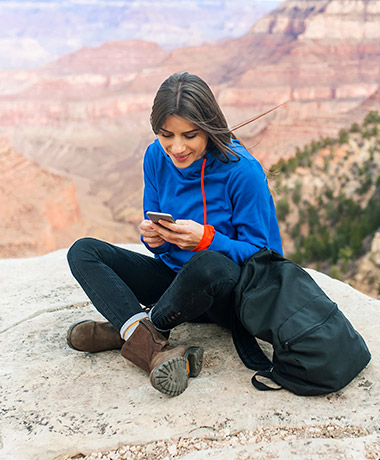
Emily Thompson, a traveler from Toronto, Canada, has a passion that knows no borders. Having journeyed through over 30 countries, her experiences are vast and diverse. With over 8 years in the travel industry, Emily isn't just a globetrotter, but a travel professional. From the Northern Lights in Iceland to navigating the bustling streets of Tokyo, Emily curates detailed travel guides that help fellow explorers get the most out of their trips. With Emily's guidance, your adventures will be both enriching and unforgettable.
Discover things to do, day trips, hotels and restaurants in Osaka
More About Osaka
- Best Things to Do in Osaka: An Essential Guide for Travelers
- Namba Travel Guide: The Vibrant Heart of Osaka
- Day Trip to Hikone from Osaka: Ancient Castles, Lake Biwa, Scenic Gardens
- Day Trip to Arima Onsen from Osaka: Bathing in One of Japan’s Oldest Hot Spring
- Day Trip to Himeji from Osaka: Embracing a Timeless Elegance
- Day Trip to Kobe from Osaka: Savoring Seaside Delights
- Day Trip to Nara from Osaka: Delve into Japan’s Ancient Past
- Day Trip to Kyoto from Osaka: A Quick Escape to Japan’s Cultural Heart
- Osaka Station vs. Umeda Station vs. Shin-Osaka station vs. Osaka-Namba station
- Osaka Station: A Traveler’s Hub
- Osaka Castle Park 4.3 / 5
- Tombori River walk 4.3 / 5
- Osaka Nipponbashi Denden Town 4 / 5
- Kema Sakuranomiya Park 4 / 5
- Harukas 300 4.5 / 5
- Sumiyoshi Taisha 4.4 / 5
- Shinsaibashi-Suji Shopping Street 4.3 / 5
- Osaka Tenmangu 4.2 / 5
- Namba Yasaka Jinja 4.3 / 5
- Osaka International Peace Center 4.1 / 5
- The Ritz-Carlton, Osaka 4.4 / 5
- The St. Regis Osaka 4.4 / 5
- Conrad Osaka 4.5 / 5
- W Osaka 4 / 5
- Hotel Hankyu RESPIRE OSAKA 4.3 / 5
- Osaka Excel Hotel Tokyu 4.4 / 5
- Courtyard by Marriott Osaka Honmachi 4.1 / 5
- The Westin Osaka 4.2 / 5
- Imperial Hotel Osaka 4.4 / 5
- The Royal Park Hotel Iconic Osaka-Midosuji 4.4 / 5
Connecting Osaka and Kansai with the World.
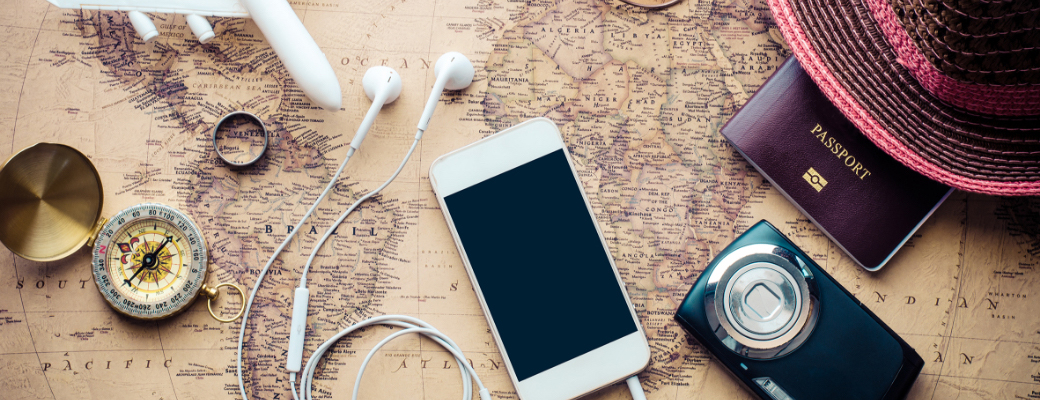
- Suggested Itineraries
- KOYASAN (Day Trip)
An sacred area that Kobo Daishi Kukai has founded Welcome to the extraordinary
Recommended route
Departure Nankai Namba station
90 minutes by Nankai Electric Railway (Nankai Koya Line)
Gokurakubashi station
5 minutes by Nankai Electric Railway (Koyasan Cable car)
Koyasan station
20 minutes by Nankai Rinkan Bus (To Okunoin-mae)
15 minutes by Nankai Rinkan Bus (To Daimon-minami Chushajo)
Kongobu-ji Head Temple
5 minute walk
Danjo Garan Sacred Temple Complex
Koyasan reihokan museum.
15 minutes by Nankai Rinkan Bus (To Koyasan sta.)
Goal Koyasan station
The first holy ground
Koyasan, the sacred area above the sky, is known as "Issan Keidaichi" which means that the whole area of Koyasan is the sacred area of the temple. Gokurakubashi is the first spot inside the sacred area, and is the boundary of the ordinary and the religious life. Gokurakubashi station created "Chozuya (purification fountain) of the begining" where you purify your heart before entering the sacred area, and "Wings of Gokurakucho (mythical bird) " which you can write your wish and thoughts of your step to a new begining. The journey to the sacred area which purifys your heart starts here.
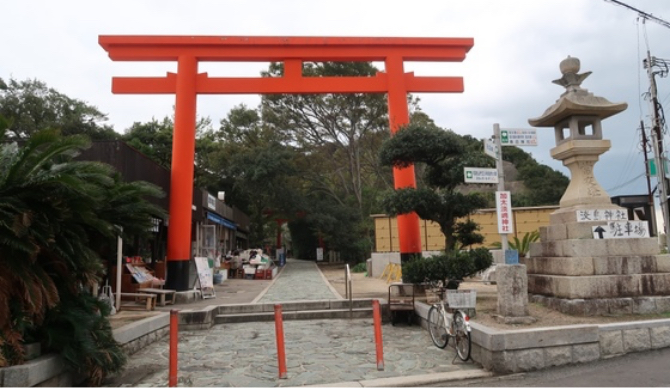
The place where Kobo Daishi still prays
Okuno-in is the center of the cult of Koyasan and is one of the most important sacred areas of the cult of Kobo Daishi. Tombstones of well-known warlords lye beside the approach with Japanese cedar trees aged more that hundreds of years. Walk through the spiritual area and enter the mausoleum where Kobo Daishi (Kukai) fell into deep meditation. Koyasan has many events throughout the year, but "Shoujingu" is one of the most historical events. It started from 1,200 years ago when Kobo Daishi started his deep meditation and continues today. It is a ceremony to deliver meels for Kukai that waits at the mausoleum, and is held 2 times a day at 6:00 A.M. and 10:30 A.M.
The center of the 3,000 temples of Koyasan Shingon sect in Japan
Koyasan Shingon Sect Main Temple Kongobu-ji
This is the large and beautiful main temple of Koyasan Shingon sect. Inside the temple are many architectures, and you may see one of the largest stone gardens in Japan, "Banryutei", rooms decorated by gourgeous fusuma paintings (paintings drawn on the paper doors of Japanes rooms) by historical artists, and the room that Hidetsugu killed himself.
One of the two main sacred sites along with Okuno-in
Danjo Garan is where Koyasan started, and is one of the 2 main spots of Koyasan with Okuno-in. It is the first spot where Kobo Daishi (Kukai) established Garan (buddhist temples) in Koyasan. Here, the symbol of Koyasan, Konpon Daito Pagoda awaits you. You can find many spots to see here. The centeral hall of Koyasan, Kondo Hall, the national treasure, Fudo-do Hall, Chumon, which was reconstructed the first time in 172 years to commemorate the 1,200th anniversary of Koyasan, and Sanko no Matsu (three-needled pinon) awaits you.
Enjoy the national treasures at once
Koyasan is a treasure box on top of the mountain and a hall of religious art, and you can find many national treasures and important cultural properties. Reihoukan was established in 1921 to protect, manage and open these precious cultural heritages to the publiic.
Other spots
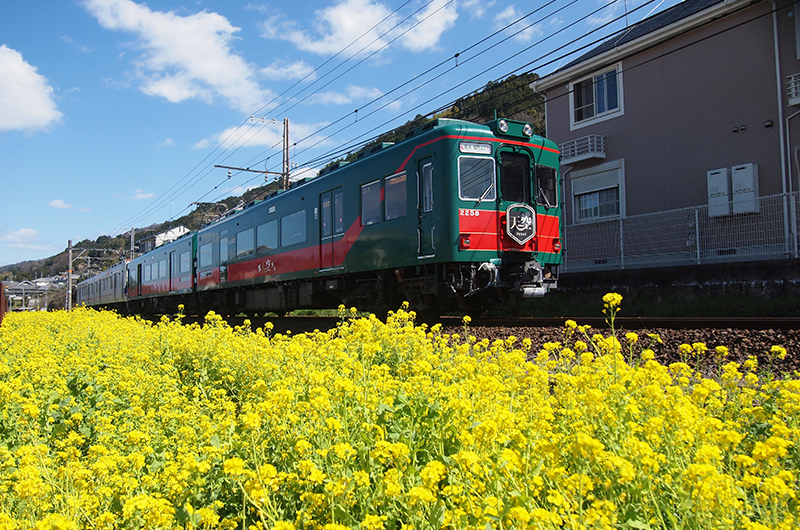
Sightseeing Train "Tenku"
Enjoy the changing scenery from the window
Running area : "Hashimoto" station - "Gokurakubashi" station, Nankai Koya Line Reservations : Reservation is only available by phone calls at the Tenku Reservation center. Call the center 10 days before (from 9 A.M.) to the day before (until 5 P.M.) the day you wish to ride Tenku.
HP: https://www.nankai.co.jp/koya/tenku/
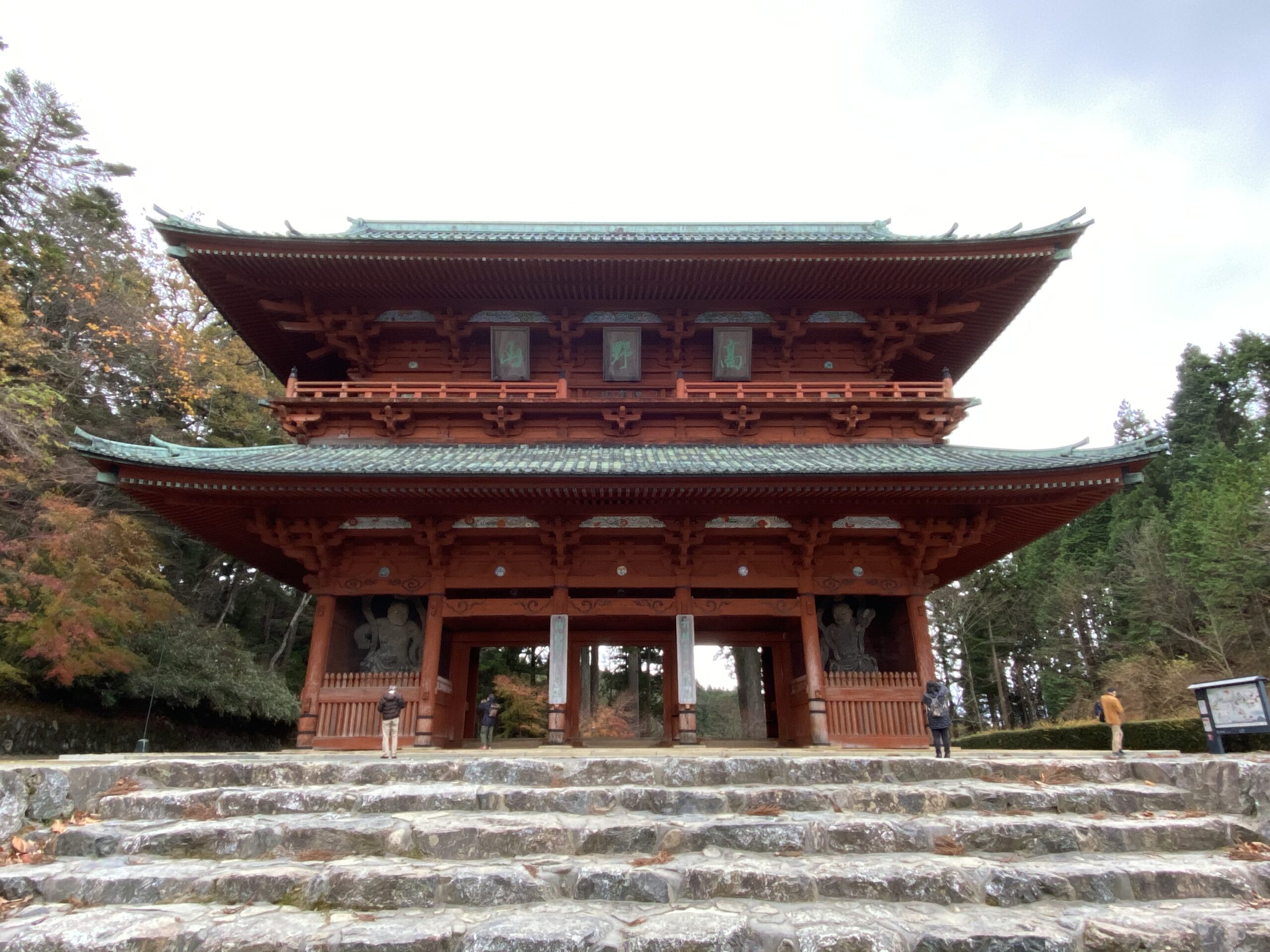
The entrance to the sacred area Koyasan
Address: Koyasan, Koya-cho, Ito-gun, Wakayama
HP: https://en.visitwakayama.jp/venues/venue_5/
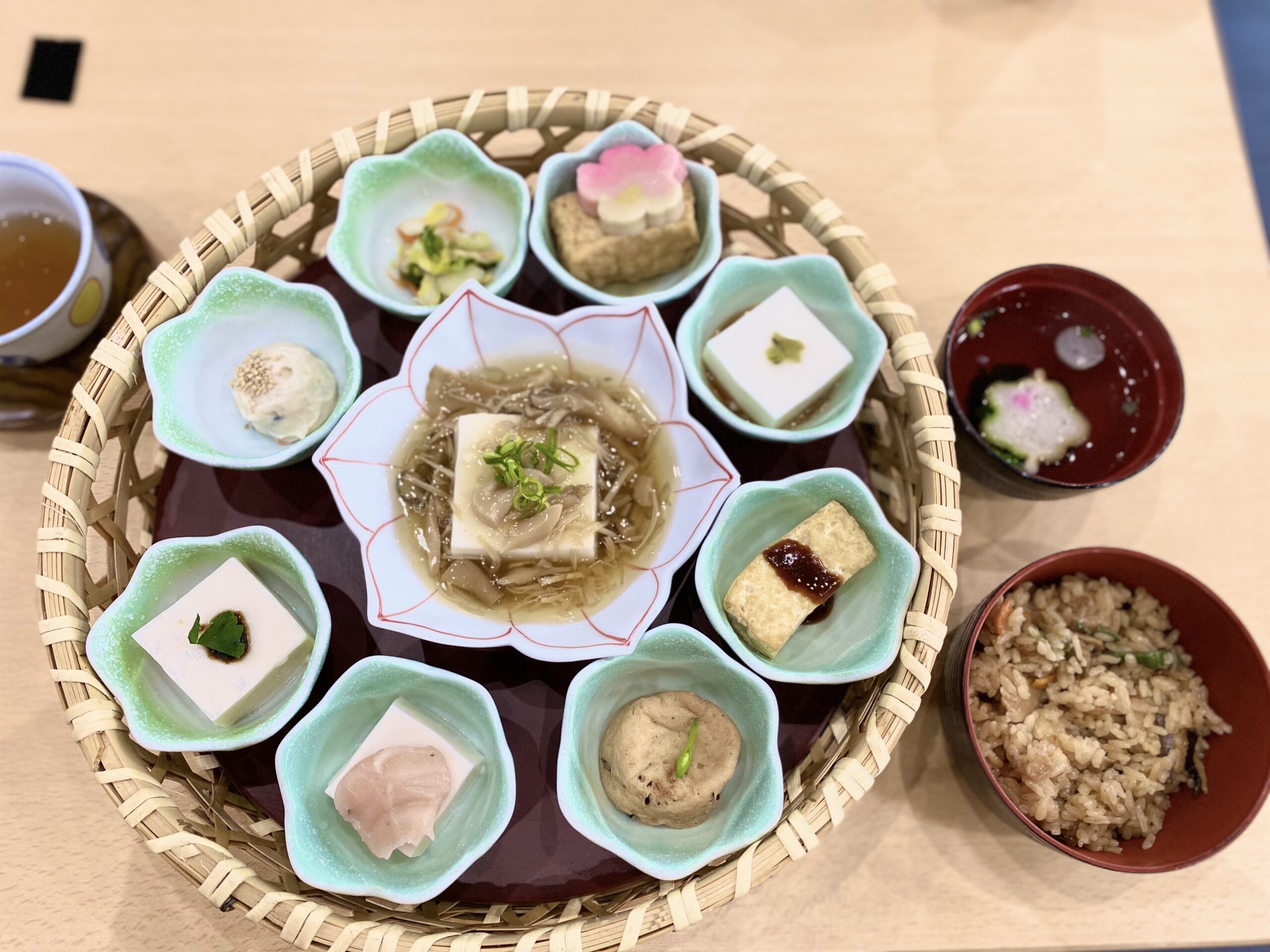
Kadohama Gomatohu Restaurant
Try the speciality of Koyasan, "Gomatofu" necessary for Shojin Ryori (vegetable dish for Buddism)
Address: 230, Koyasan, Koya-cho, Ito-gun, Wakayama Opening Hours: 9:30 A.M. ~ 5:00 P.M. (Meals served from 11:00 A.M.)
HP: http://www.gomatohu.com/
Transportation facilities to use
Koyasan station, Nankai Electric Railways (90 minutes by the Limited Express Koya from Nankai Namba station)
Related links

Visit Wakayama
- Itineraries
Koyasan: Buddhism & Beauty in the Mountains
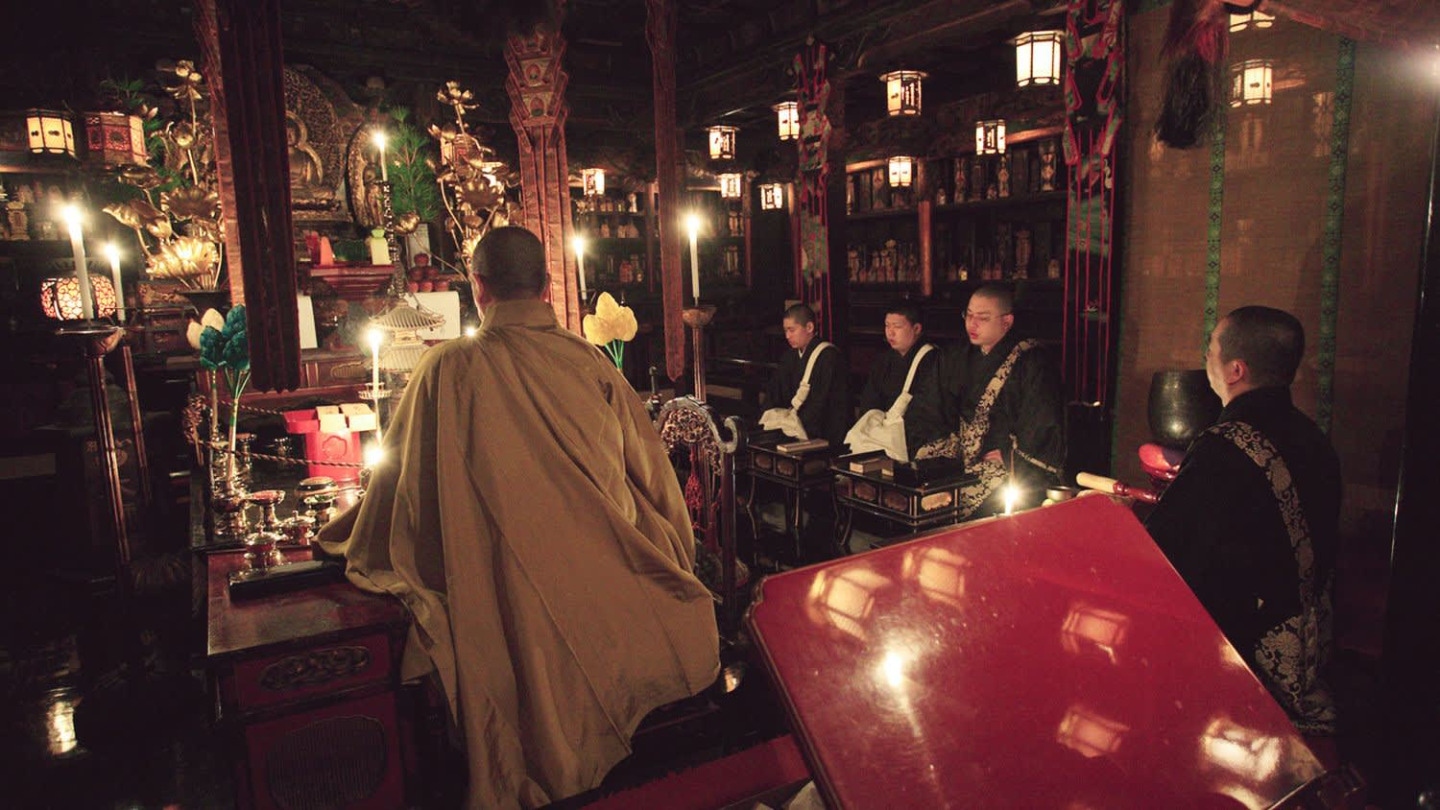
A calming respite atop Koyasan, the home of Shingon Buddhism
Koyasan is one of the most important Buddhist temple complexes in Japan. This World Heritage monastic complex of 117 temples is dedicated to the study and practice of esoteric Buddhism. Shingon was introduced to Japan by a monk named Kukai (posthumously known as Kobo Daishi). Kobo Daishi began teaching Shingon Buddhism in Japan in 806 AD, after returning from Tang Dynasty China; ten years later he was granted permission by the Imperial Court to build the remote mountain complex that is present-day Koyasan. The most sacred areas in the temple complex are the Danjo Garan and Okuno-in. Danjo Garan marks the site of the first temple erected by Kobo Daishi. To the east of Danjo Garan is Okuno-in, where Kobo Daishi is said to be in a state of eternal meditation, and where his mausoleum (Kobo Daishi Gobyo) is situated. 52 of the 117 temples in the area accept guests for overnight shukubo stays. Koyasan is a wondrous place to contemplate and seek respite from daily life. 1,200 years of history and natural beauty await to envelop you in their calming embrace.
Wakayama City
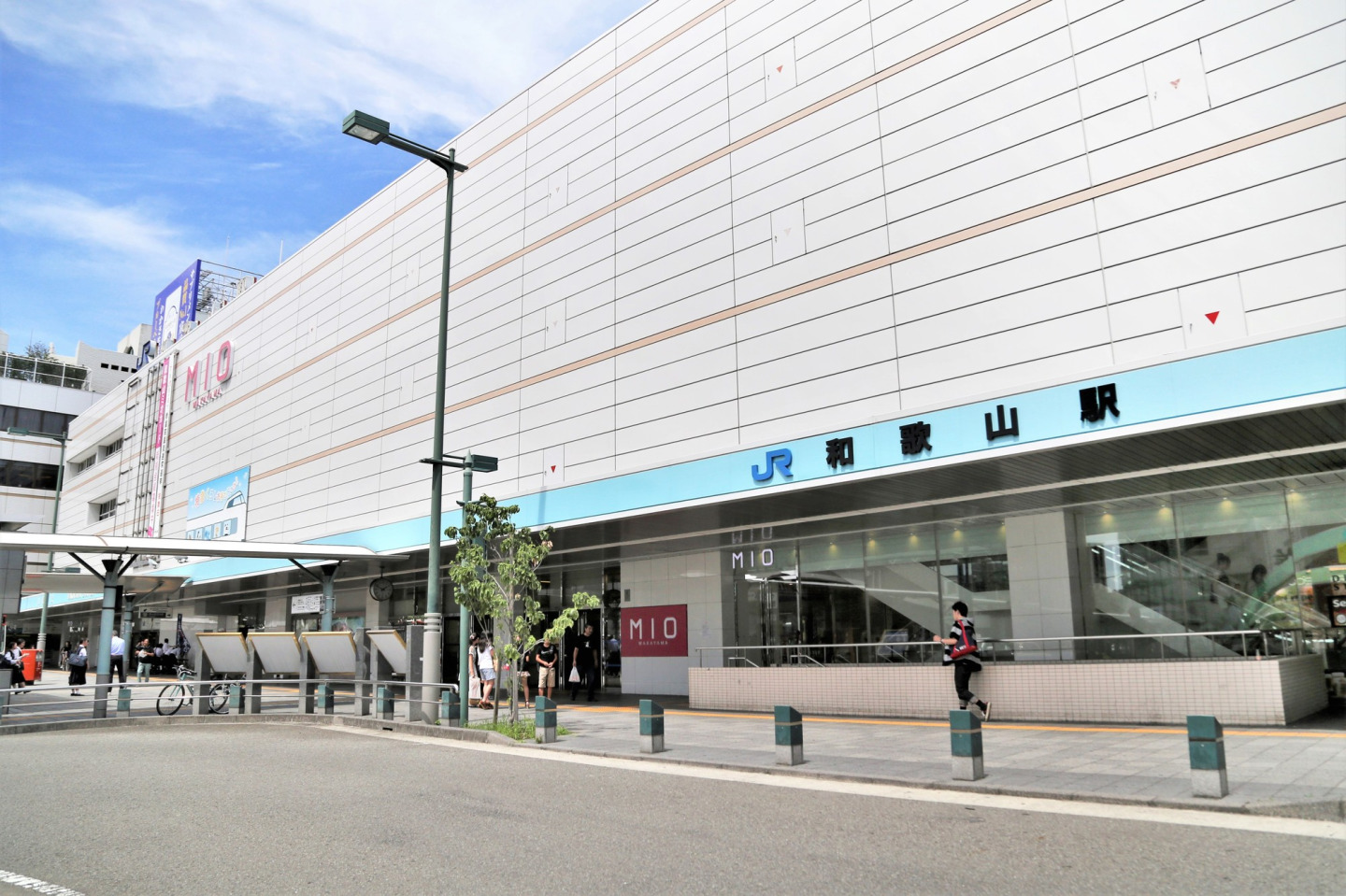
From Wakayama City, take the JR Wakayama Line train bound for Nara and disembark at Hashimoto. There, change trains to Gokurakubashi, where a cable car will take you the final distance to Koyasan Station—867 m above sea level. It takes about 2-2.5 hours.
※With an average temperature of 11°C, warm attire for the mountain climate is recommended. Mountain areas in Wakayama receive the highest rainfall, so rain gear can come in handy.
■ Koyasan can also be reached by express service to Gokurakubashi from Osaka's Namba Station. It takes around 90 minutes. If taking this route, consider purchasing the Nankai Koyasan World Heritage Digital Ticket —a round-trip fare including a 2-day bus pass and money-off coupons for use at Koyasan.
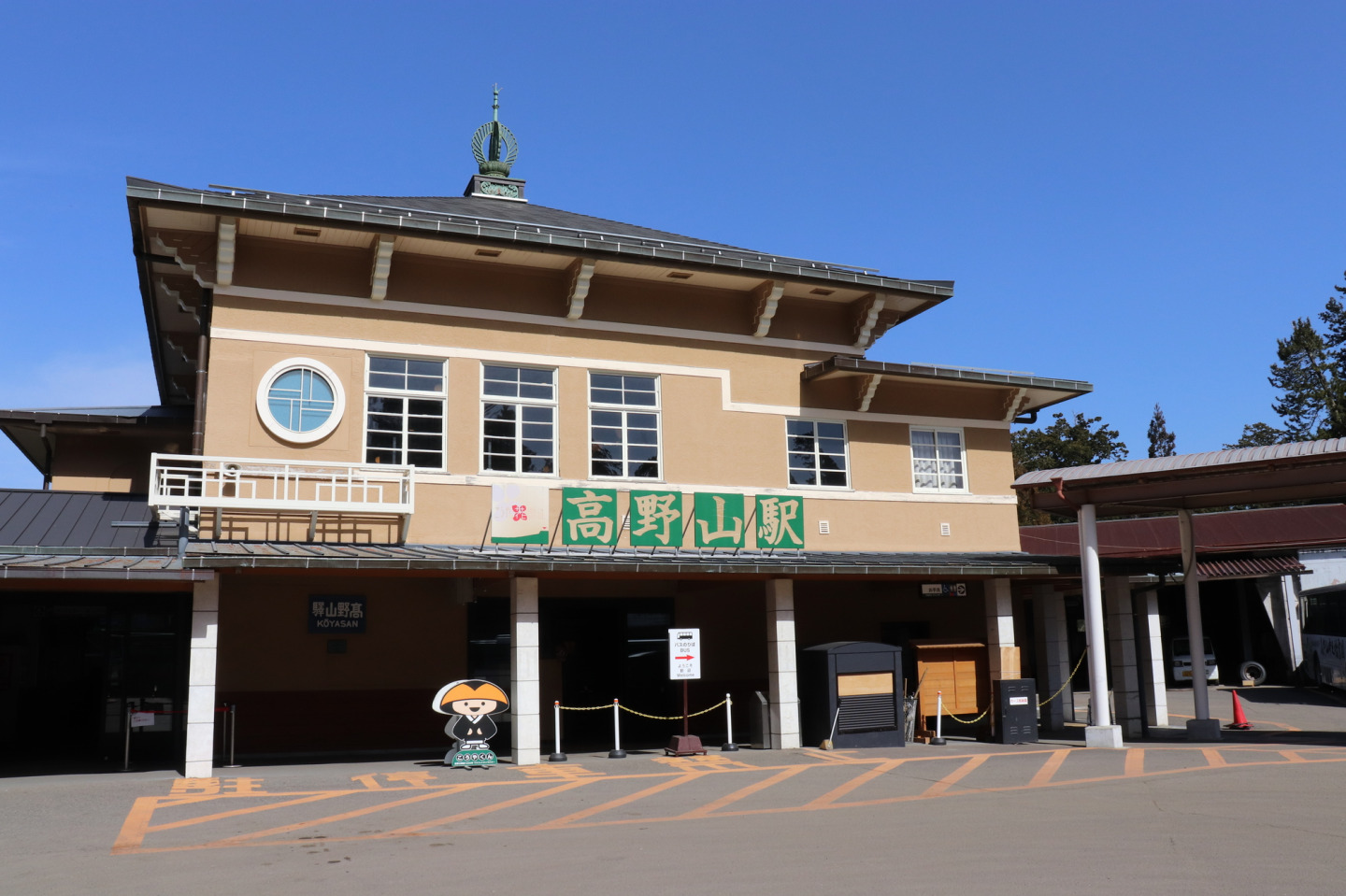
Although most sights in Koyasan are within easy walking distance, a convenient bus network is also available. If you plan to rely heavily on buses, make sure to pick up a 1-day pass available at the bus station outside Koyasan Station.
Koyasan Shukubo Association (Central Office)
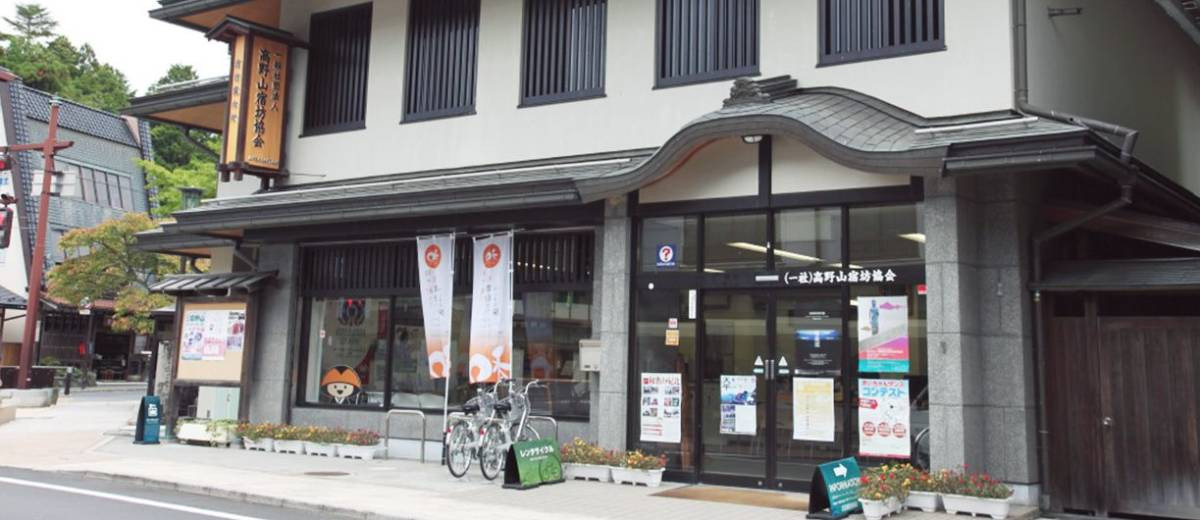
To get here, take one of the buses from Koyasan Station and disembark at the Senjuin-bashi stop. The Koyasan Shukubo Association arranges temple accommodation (shukubo), shojin-ryori lunches, and other Koyasan Buddhist experiences such as Ajikan meditation. Useful amenities include: coin lockers for luggage storage, bicycle and audio guide rentals. The audio guides cost ¥500, and provide insightful commentary on Koyasan's highlights and are available in English, French, Chinese, Korean, and Japanese.
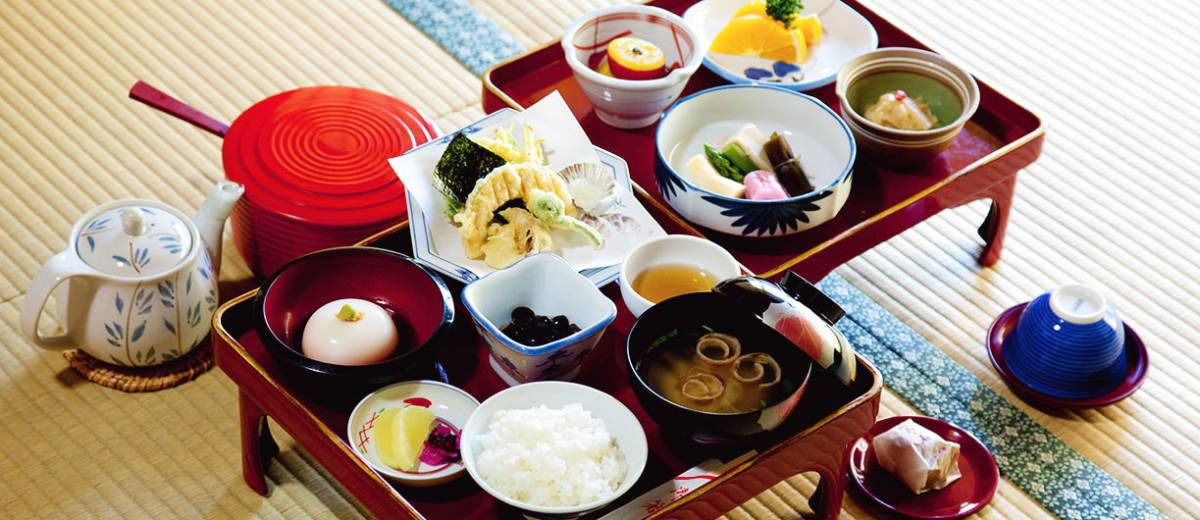
There are a variety of lunch options around Senjuin-bashi, and along the road connecting Okuno-in and Danjo Garan Scared Temple Complex. Many restaurants have English menus along with plastic replicas of the menu items on display. Keep an eye out for Koyasan delicacies: koya-dofu (freeze-dried tofu) and goma-dofu (sesame tofu).
■ Not staying in a shukubo overnight? Have the Shukubo Association book a shojin-ryori lunch for you at one of the temples. Buddhist vegan lunches start from around ¥3,000 per person.
Danjo Garan Sacred Temple Complex
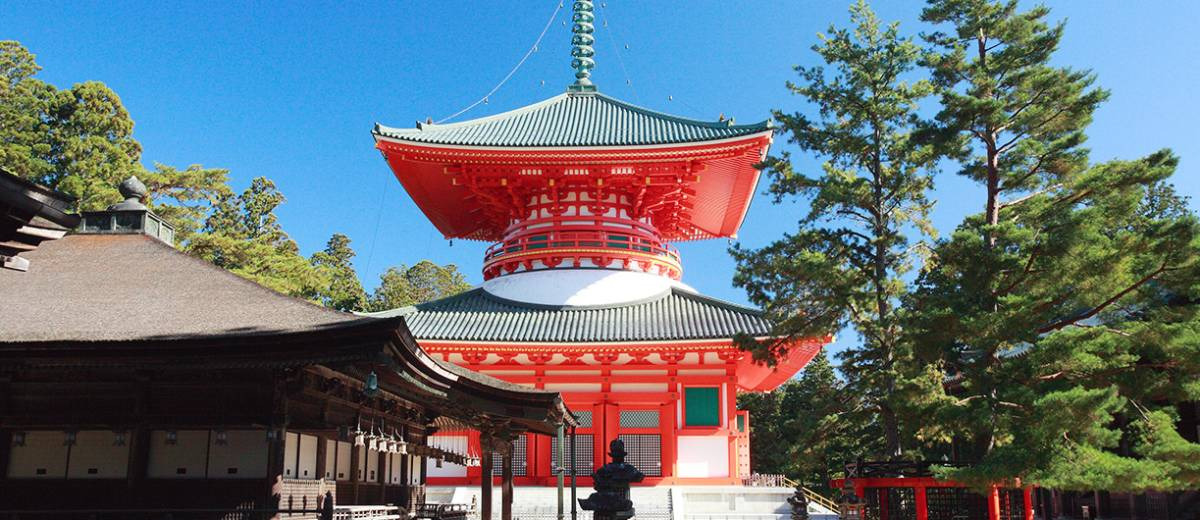
The Danjo Garan Scared Temple Complex is one of the two most sacred areas in Koyasan. It is here that monk Kobo Daishi began construction of the monastic complex atop Koyasan in 816 AD. Wander through the complex taking in the various sights, but don't pass up on the opportunity to enter the 48.5-meter high tahoto-style pagoda, Konpon Daito. It contains exquisite Buddhist statues and images, as well as a rare three-dimensional Buddhist mandala – a symbolic picture of the universe.
■ Combo tickets covering admission to various venues including Konpon Daito are available at Koyasan Shukubo Association Offices for ¥2,500.
■ There is a recommended sequential order to visit the temple sites which you may wish to follow.
Koyasan Reihokan Museum
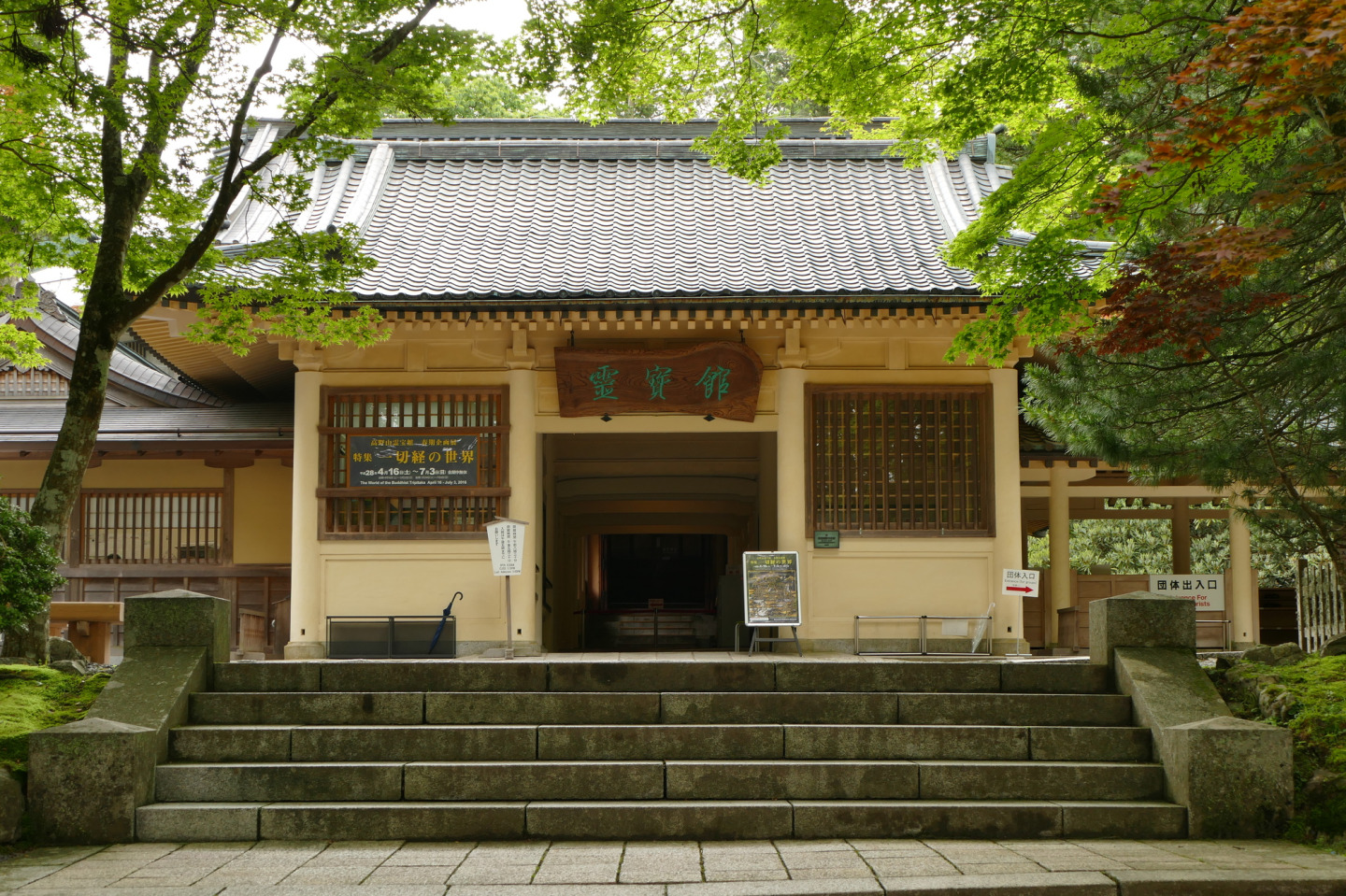
Get a close-up look at some of Koyasan's most prized art treasures. Built in 1921, the museum houses innumerable works of art that include Buddhist statues, decorative hanging scrolls, and mandalas. Just across the road from Danjo Garan Scared Temple Complex, it's also an ideal option on a rainy day.
Momijidani Teien Garden
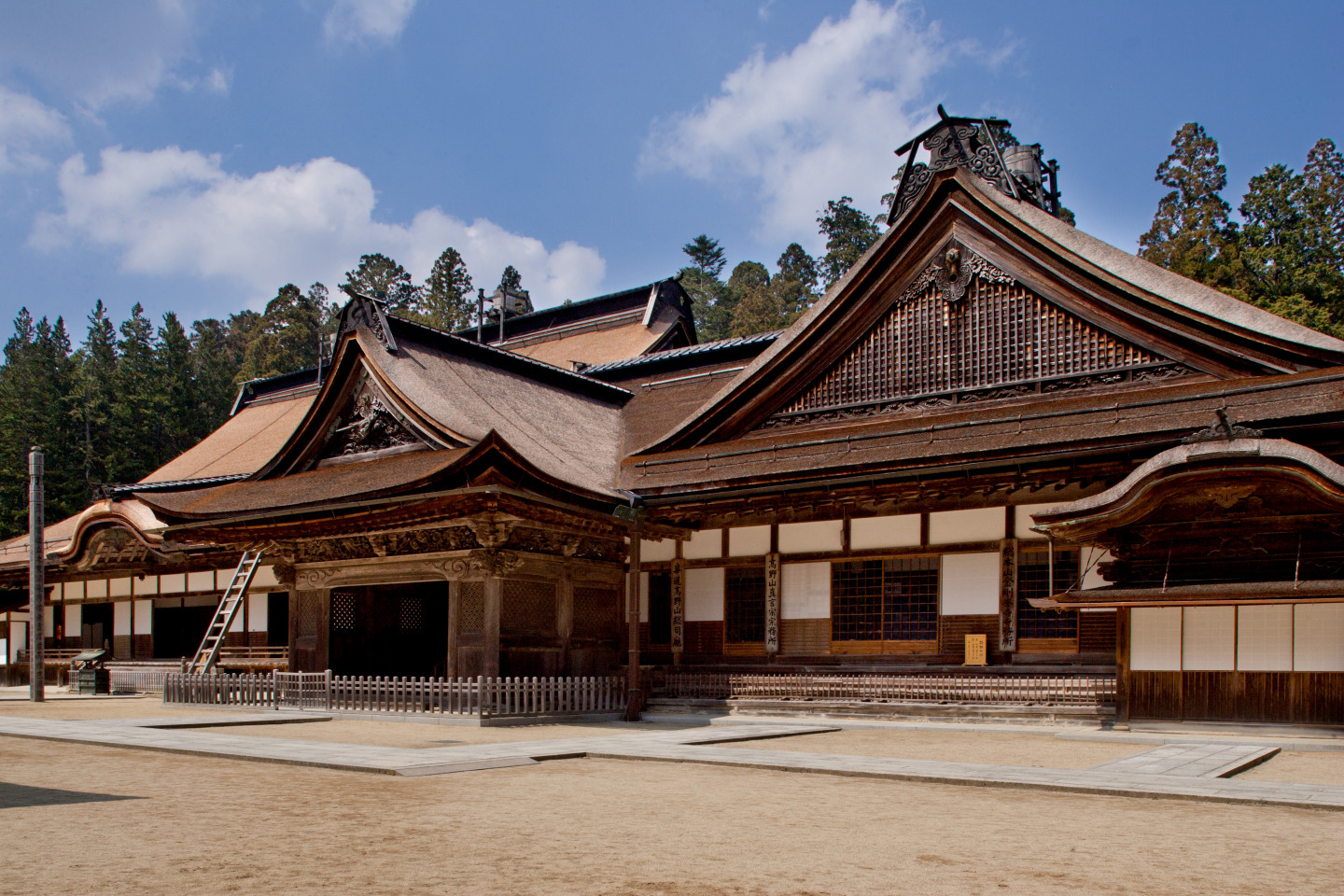
In bygone days, the entirety of Koyasan was called Kongobu-ji. Since 1869, however, it refers only to the temple standing on the former sites of Kozan-ji and Seigan-ji temples: the two were combined to create one large temple functioning as the administrative head temple of Koyasan Shingon Buddhism. Here, you can gaze out upon Banryu-tei— Japan's largest rock garden. Its sizable granite rocks depict a pair of dragons emerging from a sea of clouds. The sliding doors (fusuma) within the temple are well-worth seeing: decorated with images of the four seasons and tales of Kobo Daishi's time in China.
Shukubo Temple Retreat
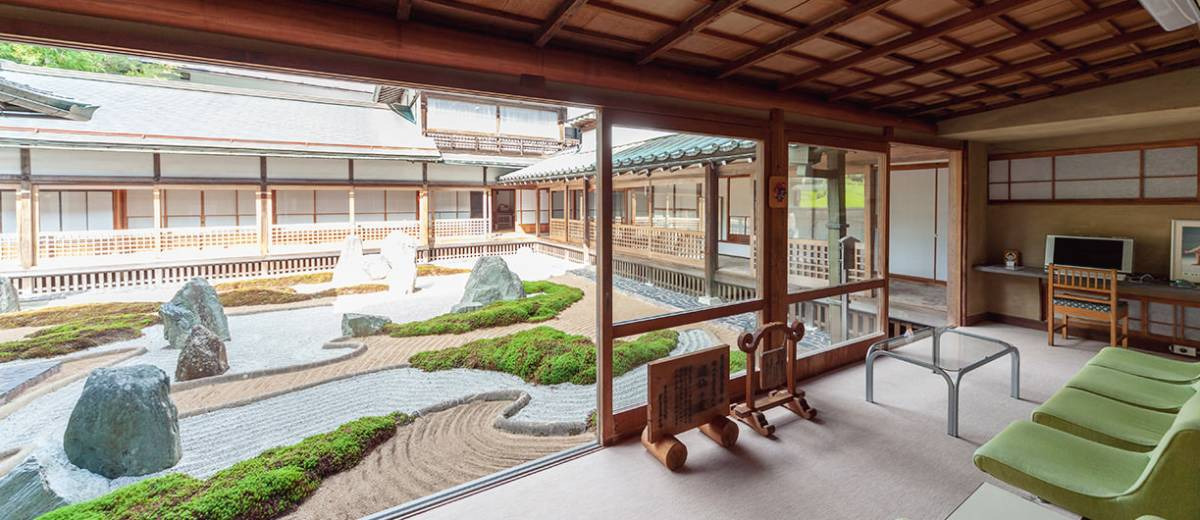
Of the 117 temples in Koyasan, 51 provide lodgings, and these shukubo are the way to go when staying overnight in the area. Temples serve shojin-ryori, vegan cuisine prepared in line with Buddhist teachings, and welcome guests to take part in temple activities that include meditation, morning services, and other rituals. Check in early to enjoy the complete temple-stay experience.
■ Certain temples are more geared towards accommodating overseas visitors with multi-lingual signage and monks that speak a second language. It is advisable to check with Koyasan Shukubo Association to find a temple that best meets your needs. Reservations are strongly recommended. Payments are typically cash-only.
Okuno-in Night Tour
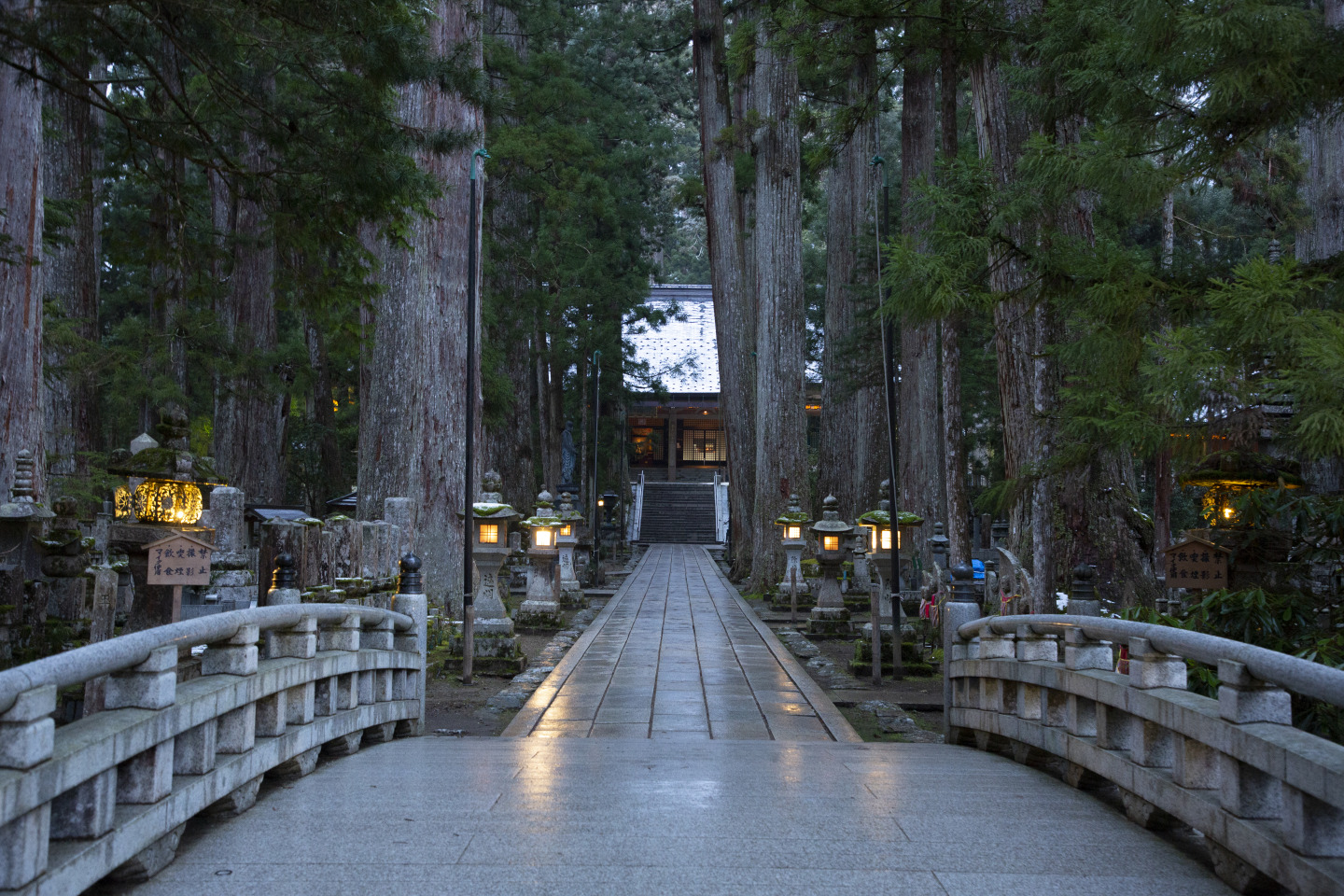
Leave the world of the living and join Ekoin temple's Okuno-in Night Tour. When night falls, a young monk will lead you through the stone lantern-lit sacred grounds of Okuno-in. Here you will find over 200,000 monuments and graves for some of Japan's most prominent feudal lords. The young guide will recount Okuno-in tales and secrets, while introducing some of Kobo Daishi's teachings. The daily tour conducted in English leaves from Ekoin at 7:00 p.m. KOYASAN OKUNOIN CEMETERY NIGHT TOUR
■ A special lantern procession through Okuno-in is held each 20th of the month. Organized by the Koyasan Shukubo Association, visitors are loaned lanterns and walk together up to Torodo (Lantern Hall) where a short Buddhist service in Japanese is held. Departing at 7 p.m. from the Ichinohashi Office, reservations are not required and participation is free. The auspicious March 20th ceremony, commemorates the eve of Kobo Daishi's said entrance into a state of eternal meditation.
Kobo Daishi Gobyo
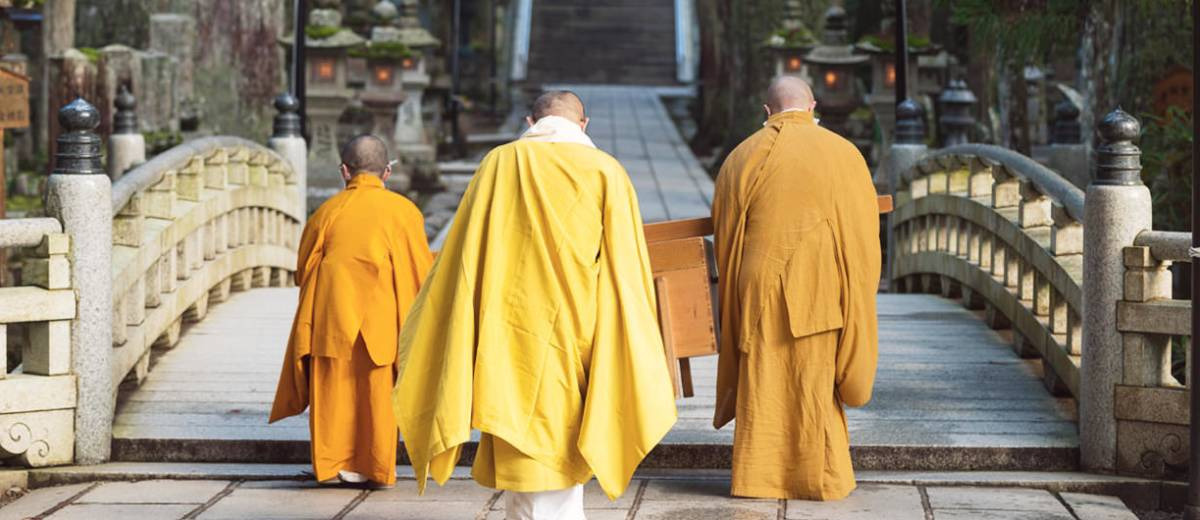
After seeing Okuno-in by night, it is well-worth visiting this mystery-filled landscape by day. Walk the path up to Gobyobashi, the third bridge; the most sacred ground is beyond this bridge. As you approach the innermost sanctum, amidst the grove of tall cedars, and moss-covered weathered tombs, you may even feel the solemn ambiance quieting the mind. Torodo, a picturesque hall of worship decorated with donated lanterns is located here. These thousands of lanterns are the last spot to view before heading behind the hall to Kobo Daishi Gobyo, the mausoleum and place of eternal meditation of the founding monk of Shingon Buddhism. Concluding a Koyasan sojourn, visitors often honor Kobo Daishi and offer prayers for world peace.
■ With return journeys to Wakayama City and Osaka taking approximately 2 hours, aim to leave Koyasan a little after lunchtime. If you are looking for Koyasan souvenirs, stop in at the gift shops located in town. Items range from hand-crafted goods and regional foods to prayer beads (juzu) and other Buddhist paraphernalia.
Plan Your Trip
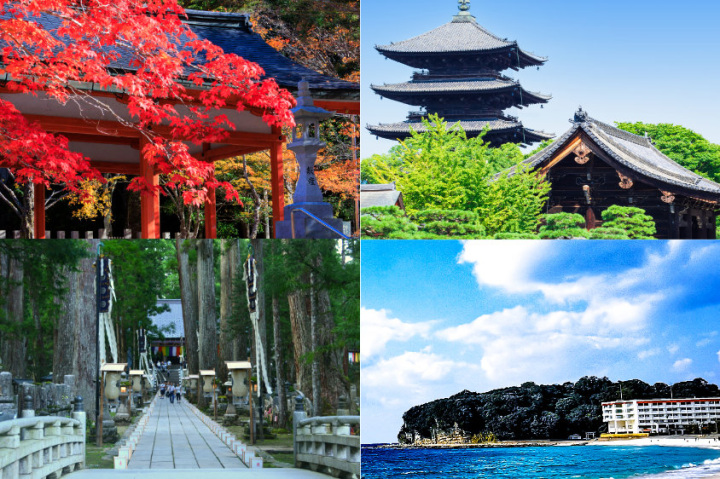
- Tokyo Cheapo (繁體中文)
Mount Koya: A Visitor's Guide to Japan's Most Sacred Site
Mount Koya, also known as Koyasan, is a key destination for anyone wanting to learn more about the history and spirituality of Buddhism in Japan. Even for those with just a fleeting interest in religion, the mountain with its monk-run temples and lush landscapes will appreciate the tranquility and beauty of this fascinating, secluded retreat.
History and religious significance

The mountain is recognized as the center of Shingon Buddhism, an influential sect of Buddhism introduced to Japan in 805 by one of the nation’s most equally influential religious figures, Kobo Daishi (sometimes also called Kukai, 774–835), a Buddhist monk, calligrapher, and poet.
As the legend goes, Kobo Daishi built the sect’s headquarters on this mountain after a long and arduous journey all over Japan, looking for the perfect place to set up this incredible place of worship. In 826, Kobo Daishi set up the mountain’s original Garan temple complex (a newer incarnation stands today). Following the establishment of this temple, spiritual followers joined the great monk, setting up temples throughout the richly forested top of Mount Koya, slowly creating the landscape we have today.
The area is still home to some of the country’s most sacred landmarks, including Kongobuji, the head temple of Shingon Buddhism, and Okunoin, the grave of many of Japan’s elite and influential. Okunoin is also the site of Kobo Daishi’s mausoleum. Many say this is where he rests today in a state of eternal meditation. Given its deep Buddhist lineage, Mount Koya, while not in Shikoku, is considered the starting point of the Shikoku 88 Temple Pilgrimage .
When to visit

Thanks to its position high in the mountains of Wakayama, Mount Koya offers spectacular landscapes and seasonal views throughout the year. In summer, it’s not as hot as nearby Kyoto and Osaka, thanks to its lush, forested surroundings. In winter, the mountain might be a little more difficult to access, given the decent amount of snow that carpets the mountaintop. However, the lantern-lit pathways and artfully curated temple gardens dusted in snow do make for some pretty stunning views.
But if there were one top season to visit, it’d have to be autumn (October–November), when the seasonal foliage transforms that mountain from deep greens to fiery shades of red, orange and gold.
What to do on Mount Koya

Explore the sacred sites
Clearly the first thing you should do when getting to Mount Koya is put aside the best part of a day to just stroll around the mountain to get a feel of the place and explore the sacred landmarks. Okunoin is first on the list and if you want to be generous, it’s worth putting aside 2–3 hours just to do this. The walk is about two kilometers, and the site houses around 200,000 tombstones belonging to prominent monks, feudal lords, and other influential figures in Japanese culture. Along the way, you’ll get to Torodo Hall (Hall of Lamps). This is the main hall for worship, built in front of Kobo Daishi’s mausoleum, and it most spectacular in its illuminated glory after dark.

In addition to Okunoin, the mountain is home to many other sacred landmarks including the monastery of the Shingon sect, Kongobuji Temple, Garan temple complex, the gigantic Konpon Daito Pagoda. It’s also home to Reihokan Museum, a museum housing some of the mountain’s most important cultural treasures.
Try shojin ryori

While being vegetarian in Japan isn’t easy at the best of times, non-meat eaters will be in heaven when visiting Mount Koya, as many, perhaps even all of the establishments here are proudly vegetarian. To remain pure, Buddhist monks observe a vegetarian diet, consisting largely of tofu and delicious seasonal wild vegetables. This cuisine is known as shojin ryori.
Experience a Buddhist morning service
Each morning, many of the mountain’s temple lodging welcome the day with near-dawn, meditative morning prayer service. If you want to join one, just ask the temple’s monks the evening before, and they’ll likely be able to save you a spot. One tip, Eko-In Temple runs a morning service and a goma (homa) fire ritual, just beside the inn. This hypnotic ritual is a display of the fleetingness of life and the innate freedom that can come with just letting go. Well worth experiencing if you have the opportunity.
Budget: Yochi-in

One of the cheaper options in the area, Yochi-in is a traditional temple with an elegantly minimalistic garden and excellent location. This temple was established in 1127 by Imperial Prince Kakuho, the fourth son of Emperor Shirakawa. The facility serves traditional shojin ryori meals, and guests are invited to attend the temple’s religious morning ceremony (about 6:30 am) when you stay at the temple. Rooms here are private, but the bathing and toilet facilities are communal.
Mid-range: Fudoin

This cozy temple is ideally situated just off the main road between the visitor center and Okunoin cemetery. It’s one of the smaller temples in the area, which has its benefits, as it can feel a lot more intimate and secluded. They serve traditional Buddhist vegetarian cuisine for breakfast and supper as part of your stay, and meals are served in the atmospheric Shoin reading room building, which dates back to the Momoyama period (1573~1603). Each room also has an en suite.
High end: Souji-in

This 1,200-year-old Buddhist temple is located right in the heart of Mount Koya and is, depending on the season, one of the more expensive and luxurious choices on the list. It sits right across from the temple complex, which makes for an incredible ambiance. Shojin ryori is served for breakfast and supper, and even the occasional glass of wine can be enjoyed on the scenic deck.
How to get to Mount Koya
From tokyo or kyoto.
There’s no real direct route from Tokyo or Kyoto to Mount Koya, so we’d suggest making your way to Shin-Osaka Station, then heading to Mount Koya from there.
Mount Koya is most easily accessed via the Nankai Railways, which depart from Osaka’s Namba Station and Shin-Imamiya Station.
From either station, take the Nankai Koya Line to the Gokurakubashi terminal station. There are a few limited express trains, which take about 80 minutes; otherwise this route will take around 100 minutes.
From Gokurakubashi, you can transfer to the cable car which travels up the mountain to Mount Koya, and it takes about five minutes.
Once you arrive you can get around by the local Mount Koya bus.
Koyasan World Heritage Ticket
To save a bit of money, Nankai Railway also offers the Koyasan World Heritage Ticket . This pass provides:
- Round-trip transportation from Namba Station or Shin-Imamiya Station to Mount Koya
- Unlimited usage of the buses around Mount Koya
- Discounts on the admission fees at most attraction sites and some souvenir shops in Koya
It costs ¥ 3,400 and is sold at major Nankai Line stations.
- Okunoin Cemetery
- Architecture
- UNESCO World Heritage
Get the best Japan Cheapo hacks direct to your inbox

10 Adrenaline-Pumping Okinawa Adventures
The options are plentiful, the prices low. Choose from jungle treks, wild camping, zip-lining and more.

A Matcha Lover's Guide to Kyoto
Love tea? Then you'll love Kyoto.

Updated: 2024 Japan Cherry Blossom Forecast
The blooms are fashionably late. Here's when to see sakura in all the major cities.

April 2024: Top Events Around Japan
Look forward to flowers and festivals galore!

8 Perfect Places To See Cherry Blossoms in Osaka
Castle grounds, sprawling parks — and somewhere extra special.

Cherry Blossoms in Kyoto: 14 Best Sakura Spots
From temples to riversides, geisha districts — and more.

9 Things To Do in Fukui
Explore the shiny new stop on the Hokuriku Shinkansen — an easy trip from Tokyo.

6 Must-See Fertility and "Penis Festivals" in Japan
Stop giggling and start reading.

11 Best Places to See Cherry Blossoms in Japan
Riverside paths, real castle moats, pagodas and more.

Ghibli Park Guide: Tickets, Getting There and More (Updated)
Now with the Valley of Witches, and real-life cat buses.

March 2024: Top Events Around Japan
Plum and cherry blossoms, spring festivals, the Grand Sumo Tournament in Osaka — and more!

The Survival Guide to Kyoto Station
Bookmark this for easier travels.

Recommended hotels located nearby

Close without accepting
Koyasan Travel Guide: Best Things To Do In Koyasan
This page may contain affiliate links which earn us a commission at no extra cost to you to support the site. Thank you!
Koyasan is one of the most sacred places in Japan. Located in Wakayama prefecture, less than two hours from Osaka, Koyasan makes for a spiritual getaway. Here is everything you need to know before visiting Koyasan.
Japan is filled with ancient and spiritual history. But there probably isn’t a place as sacred, enriching and close to disconnecting from the busy cities as Koyasan . Only a couple of hours away from Osaka, it makes for the perfect overnight stay off the main tourist tracks.
Koyasan is seeped in history and spirituality. It is the centre of Shingon Buddhism, home to the largest cemetery in Japan and the place where Kobo Daishi entered his eternal meditation nearly 1,200 years ago.
Another thing that has put Koyasan on the map for travellers is that it’s one of the best places in Japan to stay overnight in a Buddhist temple. Nearly half of the active temples in Koyasan offer this – and I was lucky enough to experience this too.
Staying overnight in Koyasan has been one of the most memorable experiences I’ve had in Japan. In this guide, I’ll show you what you can experience in Koyasan, so you can feel the importance of this sacred town and make the most of your time here.
* We were invited to come and stay in Koyasan by Visit Wakayama as a press stay. All views are my own.

Why Visit Koyasan – Brief History
Before we dive into the best things to do in Koyasan, I want to share some information about the importance of the town and its history.
Koyasan was founded by Priest Kukai (also known as Kobo Daishi) over 1,200 years ago . He studied Buddhism in China and returned to Japan a couple of years later to spread Shingon Esoteric Buddhism. In Koyasan, he established the headquarters of Shingon Buddhism in Japan.
The town is located at an elevation of around 900 meters, and it’s said that Kobo Daishi picked this place because of the surrounding eight mountain peaks. They resemble the Buddhist symbol of the lotus plant. On top of that, it provides a place away from distractions – the perfect place for monks to practice Shingon Buddhism and pray.
Koyasan is also home to the largest cemetery in Japan , Okunoin, which has over 200,000 gravestones. At the end of the cemetery, you can find Kobo Daishi’s mausoleum. It’s believed that instead of passing away, Kobo Daishi sits here in eternal meditation. For over 1,000 years, monks have been bringing breakfast and dinner to his mausoleum every single day.
In 2004, the town gained World Heritage status by UNESCO. But it’s more than just a place for sightseeing, it’s a place where you can fully immerse yourself in Shingon Buddism and the daily lives of the monks.

During the Edo Period, Koyasan housed over 2,000 temples – which is surprising, seeing that the town itself is only two by three kilometres big. Today, Koyasan is still an important Buddhist centre, with 117 active temples . Over 50 of them offer a truly unique experience: Shukubo (an overnight stay in a Buddhist temple).
While there are other places in Japan where it’s possible to stay overnight in a Buddhist temple , Koyasan is particularly famous for it. Because there are so many temples you can stay at, and since many of them are foreigner-friendly (easy to book on websites like Booking.com and have English-speaking staff), it offers the perfect opportunity to experience something like this.
My overnight stay in Koyasan was one of the most memorable experiences I’ve had in Japan. Tons of research has gone into this article, along with input from the tourism board – so I’m very excited to share the best things to do in Koyasan below. Hopefully, it’ll help you plan your trip there!

Best Things to Do in Koyasan
Here are the best things to add to your Koyasan itinerary:
1. Stay Overnight in a Buddhist Temple
Shukubo, or temple stay, is one of the best things to do in Koyasan. While it’s possible to do this in other parts of Japan, Koyasan is the best place for it. Of 117 Koyasan temples, 52 offer this service (also known as Shukubo ).
When staying overnight at a Buddhist temple, you get way more than just a room. You get to join the monks in their daily activities (such as an evening meditation and morning chanting or fire ceremony) and taste the traditional cuisine: Shojin Ryori . Every temple is different and has its own ceremonies and traditions.
During my visit to Koyasan, I stayed at Rengejoin – a temple that has been offering lodging to pilgrims and travellers for centuries. Visit Wakayama booked us the Royal Suite , which included a beautiful tatami living room, a separate bedroom with two Western beds and a bathroom looking out over the temple garden. It’s one of the most beautiful rooms I’ve ever stayed in!

As part of my stay at Rengejoin , I attend their evening Ajikan meditation session and the morning Sutra ceremony . Dinner and breakfast were both included too, in authentic Buddhist Shojin Ryori style – it was incredible. I’ll go into more detail about what Shojin Ryori is and why it’s so special a bit further down this article.

Please note that credit cards aren’t widely accepted in Koyasan. It’s best to bring cash to pay at temples and shops.

2. Visit Okunoin, Japan’s Largest Cemetery
Okunoin is probably the most famous sight in the whole of Koyasan. Not only is this the largest cemetery in Japan, but it’s also where Kobo Daishi is believed to remain in eternal meditation.
The cemetery sits in a forest filled with tall cedar trees, towering over 200,000+ gravestones . The stone path leads you from the cemetery entrance to Kobo Daishi’s mausoleum.
Walking among the towering trees while passing old gravestones covered in moss can only be described as peaceful. Okunoin is one of the most beautiful and serene places I’ve been to in the world. Just for this, it’s worth making the trip to Koyasan.
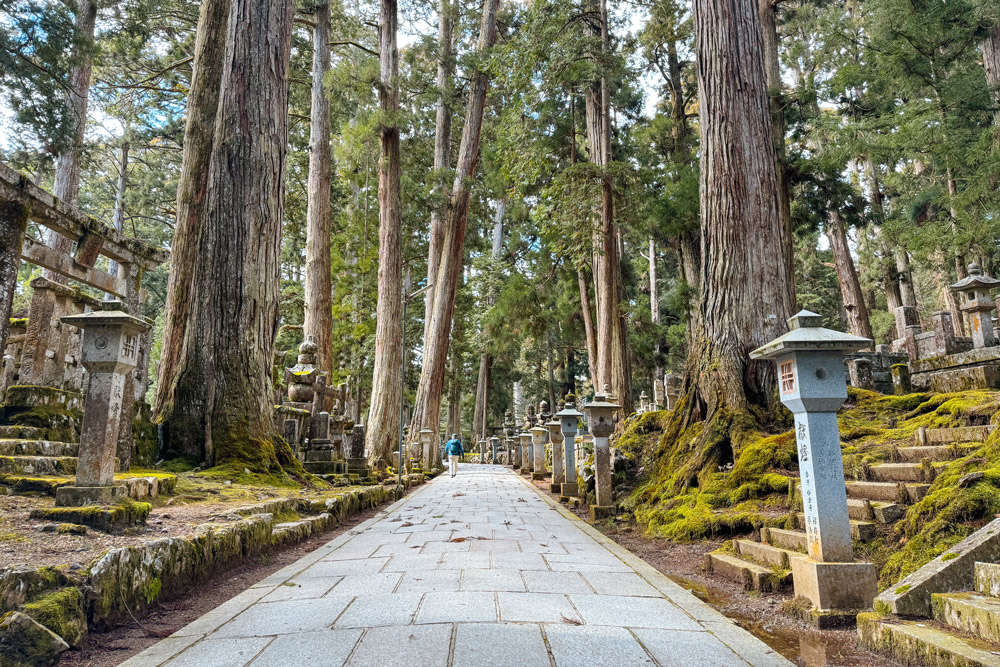
Okunoin is the final resting place for many famous names, but it’s important to note that anybody can be buried here . You don’t even have to be a Buddhist! To be buried in Okunoin, you’ll have to pay a fee to one of the temples to secure a spot in their part of the cemetery. Since the cemetery is so famous, the fees can run up quite high, especially if you want a good spot.
The monk who guided us through the cemetery (we did a night tour , more info on this below!), told us that many graves here only contain the neckbone of the person buried here. The other remains are kept in a shrine closer to their families.
The path in the cemetery is around two kilometres long and takes you across three bridges towards the end of the cemetery. Here is where you can find Kobo Daishi’s mausoleum.
Before the last bridge, you’ll see a row of Buddha statues . Before crossing the bridge, it’s customary to pick one and throw some water on them. In the past, the bridge didn’t used to be there. People would cleanse themselves in the river before entering the sacred grounds. Nowadays, you can imagine cleaning yourself while “washing” the Buddha statue.
Before crossing the bridge, also make sure to bow – you are about to enter sacred ground.

Shoujingu Ceremony
When planning your visit to Okunoin, you’ll want to try and be at Gobyo-bashi Bridge at either 6AM or 10:30AM to witness the Shoujingu Morning Ceremony. Most temple stays have morning ceremonies at 6AM, including Rengeojin (where I stayed), so I made sure I was at Okunoin for 10:30AM.
As part of a long-standing ritual, the monks of Koyasan have been bringing Kobo Daishi breakfast and lunch every single day for over 1,000 years – no matter the weather. You can watch the monks carry the food over Gobyo-bashi Bridge towards Kobo Daishi’s mausoleum.
Having read so much about Shingon Buddhism before my Koyasan trip and having just spent the night at a temple, watching the monks carry the food across the bridge felt very special. Make sure you get there on time!
Please note that you are NOT allowed to take any photos or videos after crossing Gobyo-bashi Bridge. You should also not eat or drink after crossing the bridge, and it’s also best to take off your hat.

Torodo Hall
Beyond Gobyo-bashi Bridge lays Torodo Hall. It was built in front of Kobo Daishi’s mausoleum – inside, you can find thousands of burning lanterns . The lanterns are donated by people and are lit for eternity.
As you’re not allowed to take any photos inside (or after crossing the bridge), I’ll leave this up to your imagination until you visit it yourself. It is very impressive!
Company Gravestones
While walking through the cemetery, one particular thing caught my attention – the company gravestones . In the newer parts of the cemetery, you can find gravestones for large corporations, including Panasonic, Nissan and Yakult.
Companies have paid to have these put here to commemorate ex-employees who have passed away in their retirement or workers who passed away while working for them. It’s a way to honour those who helped shape the company.
3. Take a Night Tour of Okunoin
If you’re staying overnight in Koyasan, taking a night tour of Okunoin is something I would highly recommend. Even if you’ve already visited the cemetery during the day or are planning to visit it the next day, going on a night tour adds so much extra to your time in Koyasan.
At night, Okunoin’s lanterns are lit up, creating a unique view of an already impressive sight. It’s quiet and you can even hear the flying squirrels making noises if you’re lucky.
The tour starts at 7PM , right after dinner at your temple stay. You’ll be guided through the cemetery by one of Koyasan’s monks . Our guide became a monk just five years ago and was very open about his life as a monk and his decision to move to Koyasan. We could ask him anything and he gladly answered all our questions.

On top of that, a guided tour through Okunoin is the perfect way to learn even more about Shingon Buddhism and the importance of this cemetery. We were taught certain legends about the cemetery, what certain tombstones meant and more information about Kobo Daishi’s life (did you know he’s said to have invented Hiragana?).
At the end of the tour, in front of Kobo Daishi’s mausoleum, the monk said a special heart sutra for us. Not long after, it started to snow. It made braving the cold in February more than worth it – it felt almost magical in a place like this.
The tour guide makes sure you get back to your temple before curfew . The temple we were staying in ( Rengejoin ) is one of the furthest temples from Okunoin and we got back right in time. With enough time for a hot bath before heading to bed.
It’s best to pre-book the night tour as they have a limit of 35 guests per tour. You can do this on their official website .
4. Enjoy a Traditional Shojin Ryori Meal
When staying in a Buddhist temple in Koyasan, dinner and breakfast are included. And since you’ll be living with the monks for the day, you’ll also get to join them in their traditional cuisine: Shojin Ryori .
Buddhist cooking is fully vegetarian, but Shojin Ryori is more than that. Shojin Ryori can also be enjoyed by vegans , as no animal products are used at all – it shows the Buddhist way of honouring all life. No ingredients with overwhelming flavours can be used either, including garlic.
All meals are vegan and focus on five flavours (sweet, sour, salty, bitter, and umami), five cooking methods (raw, baked, fried, boiled and steamed) and five colours (red, blue, black, yellow, and white).

It aims to show all the individual ingredients at their very best. The way these dishes are prepared shows the essence of each ingredient, and it’s put together beautifully. It looks like a piece of art.
What ingredients are used Shojin Ryori changes throughout the year. Only seasonable vegetables and mountain plants are used.
I was lucky enough to have dinner and breakfast at Rengejoin and it was some of the best vegan food I have ever had. Dishes included soups, freshly cut vegetables, different types of tofu and vegetable tempura.
There were so many dishes to enjoy, each of them put together with extraordinary care. Every single thing I tasted brought so much flavour with it – it was delicious (and very healthy!).
If you’re not staying overnight at a temple but would still like to try a traditional Shojin Ryori meal, you can visit the following restaurants: Hanabishi or Chuoshokudo Sanbo. Or you can make a lunch reservation at one of the temples that offer a lunch menu, including Eko-in .

Try Goma-Tofu for Lunch
Guma tofu (or sesame tofu) plays a big part in Shojin Ryori meals, and one restaurant specialises in this dish: Kadohama Goma-tofu honpo .
During our overnight stay in Koyasan, we had lunch here and it was one of the best meals I’ve had in a long time. The dishes were put together so beautifully, and it’s a great way to try this special type of tofu if you’re on a day trip to Koyasan or looking for a place for lunch before or after your temple stay.

5. Walk Through the Daimon Gate
On the West side of Koyasan, you can find the Daimon Gate. This is the official entrance of Koyasan . At 25 meters high, it’s quite an impressive sight to see. There are some stunning views of the Wakayama mountains nearby too – in the evening, you can be treated to beautiful sunsets here.
Two statues stand inside the gate, protecting Koyasan. It’s a great start to your Koyasan itinerary, as you can easily make your way from this side of the town to Okonoin, which lies on the far East side. Koyasan itself isn’t very large, so you can easily explore it on foot.

6. Visit Kongobuji Temple
If you’re only planning on going inside one temple during your stay here, it should be Kongobuji. This is the head temple in Koyasan. The name Kongobuji used to be the general name for the whole of Koyasan. Kobo Daishi named it after the Sutra “ Kongobu-rokaku-issai-yuga-yugi kyo ”.
While the building itself has been destroyed and rebuilt multiple times, it is beautiful to walk through. The painted sliding doors are works of art, and you can also find Japan’s largest rock garden (Banryutei) here.
If you’re planning to visit multiple sights in Koyasan, you may want to consider buying the combination ticket . It costs 2,500 yen and includes access to Kongobuji Temple, Daishi Kyokai, Konpon Daito, Kondo, Tokugawa Mausoleum and Reihokan Museum.
7. Explore the Danjo Garan Complex
Aside from Okunoin, the Danjo Garan Complex is the most important area in Koyasan. When Kobo Daishi founded Koyasan, this is where he built the learning centre for Shingon esoteric Buddhism. It’s still active today.
There are eight buildings in the complex, Konpon Daito being the most famous one. This 49-metre-tall vermilion pagoda is one of the most iconic buildings in Koyasan. It’s worth going inside as its interior is even more beautiful.
Other important buildings you can find here include the Kondo (Golden Hall) and Miedo (Portrait Hall). You can easily spend an hour exploring the grounds.
If you’d like to learn more about the sights in Koyasan, you can rent an audio guide from the Koyasan Central Tourist Information Centre. It only costs 500 yen and can be returned the next morning. Perfect for an overnight stay!

8. Go to the Reihokan Museum
Due to many fires in Koyasan over the centuries, many works of art and treasures have been lost. This museum was founded in 1921, as a place to hold the most important pieces of art save. You can find over 78,000 pieces here, 21 of which are National Treasures.
9. Visit the Tokugawa Reidai (Mausoleum)
The third Tokugawa shogun, Iemitsu, built this mausoleum in 1643 for his father and grandfather. He wanted it to be close to Kobo Daishi’s mausoleum, the reason he picked Koyasan.
You can find two identical buildings here, one for Iemitsu’s father and one for his grandfather. They look very similar to the heavily decorated Toshogu Shrine in Nikko – where you can find Tokugawa Ieyasu’s mausoleum.
The buildings are beautiful and definitely worth a visit. The temple we stayed in, Rengejoin, is located right next to the Tokugawa Mausoleum – making it the perfect spot to visit in the morning before heading to Okunoin.
How to Get to Koyasan from Osaka
It’s very easy to get to Koyasan from Osaka. You can use the Nankai Railway line from Namba or Shin-Imamiya Station in Osaka to get to Gokurakubashi Station . The Express or Rapid Express train will get you there in around 90–100 minutes. While the Limited Express line will get you there in around 80 (this line costs extra).
From Gokurakubashi Station, you can transfer to the cable car that will take you up Mount Koya. It only takes about five minutes. From here, you can get on the bus that will take you to the town centre.

The scenic train ride to Koyasan from Osaka is something to be fully enjoyed. The train slowly climbs the mountain through dense forests and small villages, giving you a stunning view of the Wakayama mountainscape. Even though the journey took over 1.5 hours, it flew by with views like these.
To save money, you can look into getting the Koyasan World Heritage Ticket (we did!). It includes a return ticket from Osaka to Koyasan (including the cable car), unlimited bus travel in Koyasan and some extra discounts. Since a return ticket from Osaka to Koyasan already costs more than the Heritage Ticket, it’s 100% worth getting.
How to Get Around Koyasan
Koyasan is quite small. The whole town is around two by three kilometres big. And since the streets are pretty flat, it’s easy to walk around the town centre. We walked to most of the sights during our overnight stay here. However, since it was February (and pretty cold!), the buses were a great alternative to walking.
Three bus lines connect all parts of the town. From Koyasan Station, one bus line reaches to Okunoin, while another line can take you to the Daimon Gate. The third bus line connects Okunoin with the Daimon Gate.
If you have the Koyasan World Heritage Ticket , you can use all buses for free . Simply scan it at the front of the bus when getting off.
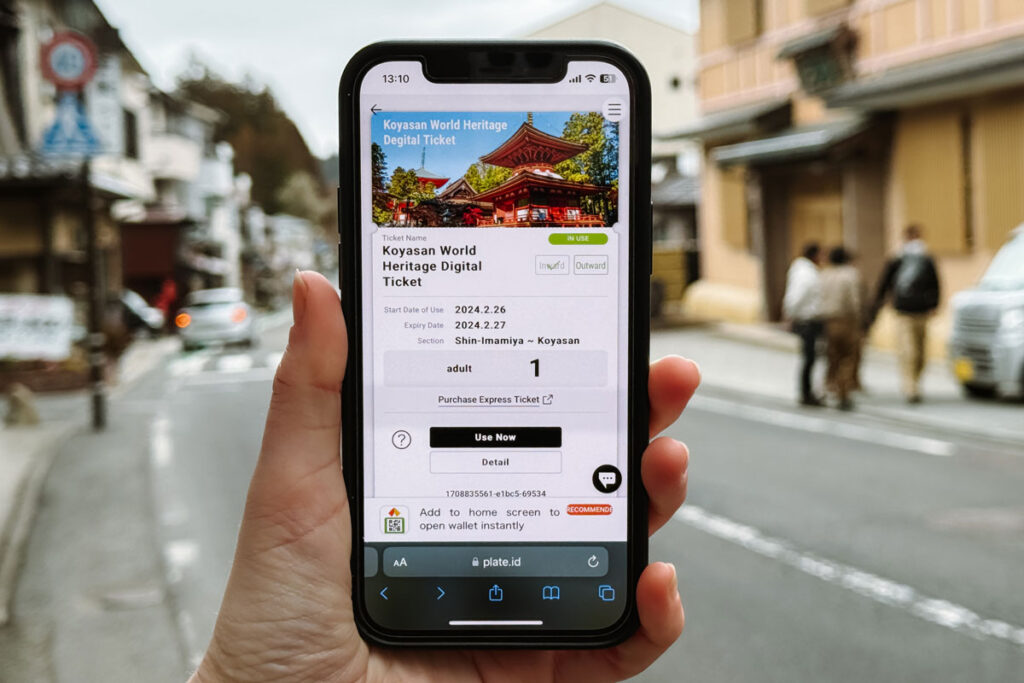
Is Koyasan Worth Visiting?
If you’re interested in history and spirituality, Koyasan is definitely worth visiting . From Osaka, Koyasan is pretty easy to get to in under two hours. The town is filled with history and is one of the best places in Japan to stay overnight in an active Buddhist temple.
Okunoin is one of the most beautiful places I’ve visited, and the unique experience of staying with the monks in a temple will stay with me for years to come.
However, before visiting Koyasan, I do think it’s important to read up about the town’s history, Kobo Daishi and Shingon Buddhism (hopefully, this article has helped so far!). Without knowing some of the basic information, visiting the temples and cemetery in Koyasan may not be as impactful as it could be.
I put a lot of research into visiting places when I write about them, and Koyasan was no exception. While knowing more about the places you visit always helps enhance the experience, I think knowing more about Koyasan before my stay here made an even bigger difference than I expected.
Adding the night tour of Okunoin to your Koyasan itinerary is also something I would highly recommend. The monk who guided us through the cemetery told us so many incredible stories – I learned so many things I wasn’t able to find online or read in guidebooks.
How Much Time Should You Spend in Koyasan?
To fully experience Koyasan, it’s best to stay at least one night . This gives you a chance to stay overnight in a Buddhist temple, get a glimpse of the daily lives of the monks and have enough time to visit Okunoin and other famous sights without having to rush.
Staying overnight also gives you a chance to join the Okunoin night tour – one of the best things I did during my stay in Koyasan.
When staying overnight in Koyasan, it’s best to leave your big luggage in Osaka if possible . You can do this at a luggage locker at the station for a few hundred yen.
While you can often drop off your luggage at the temple before check-in time, getting to Koyasan with luggage and making your way to the temple on the bus can be a huge struggle. Save yourself (and others on public transport) the hassle and take a backpack with your overnight essentials instead!
Seeing all the sights in Koyasan (Okunoin and the main temples) takes around four to five hours . So it’s possible to do it as a day trip, but you’d be missing out on the temple stay (Shukubo), which is what makes a trip to Koyasan so special.

Can You Do a Day Trip to Koyasan?
From Osaka, it takes under two hours to get to Koyasan. And since it only really takes around four to five hours to see all the main sights in Koyasan, visiting on a day trip is possible. However, taking a day trip to Koyasan means you’d miss out on one of the best things to do in Koyasan: staying at a Buddhist temple (or Shukubo).
Shukubo is the best way to fully enjoy Koyasan . You can enjoy temple stays in other places in Japan, but Koyasan is by far the best and easiest place to do so. It made the whole visit so unique and special to me – and it’s something I’d highly recommend.
But I understand that it’s not always possible depending on your budget and itinerary.
When deciding whether or not to add Koyasan to your Japan itinerary (as a day trip or not), you have to think about your interests . Personally, I’m a big fan of the spiritual side of Japan and having visited Japan multiple times, I’m on the outlook for things to do in Japan off the main touristy tracks. Koyasan fits this perfectly!
Either way, Okunoin during the day has been one of my favourite sights in Japan . And even though I did stay overnight in one of Koyasan’s temples, I still think I would’ve enjoyed visiting the town on a day trip if that would’ve worked better for my schedule. Plus, with the Koyasan World Heritage Ticket , you can easily make your way here and back.
Conclusion – Best Things to Do in Koyasan
Visiting Koyasan was such a treat, and I hope that this guide has helped you prepare for your own visit too. Enjoying a stay at the Buddhist temple, learning more about Shingon Buddhism and walking through Japan’s largest cemetery at night are experiences that I will never forget.
I was very impressed by this beautiful town, and I hope to return in the future for another stay. Hopefully during Autumn, as the Visit Wakayama representative told me it’s the best time to visit – especially with the beautiful maple trees turning orange and red.
If you’ve visited Koyasan before or are planning to visit it soon, I’d love to hear from you in the comments or my Japan Facebook Group !
Nele (Nay-la) graduated from Manchester Metropolitan University with an English and Creative Writing Degree and has lived in the UK for nearly 10 years. She has had an interest in Japan and its culture for as long as she can remember. Since her first trip in 2018 surpassed all expectations, she has continued to return to Japan to explore more of all it has got to offer. You can read her full story here .
View all posts
2 thoughts on “Koyasan Travel Guide: Best Things To Do In Koyasan”
We managed to get to 10 UNESCO sites in our three weeks in Japan, but not this one.
This post has made me a little sad we didn’t make it!
Top of the list for next time!
Hopefully you can visit next time! It’s 100% worth visiting 🙂
Leave a Comment Cancel reply
This site uses Akismet to reduce spam. Learn how your comment data is processed .
Must-Read Articles

50+ Best Things To Do In Japan

Is The Japan Rail Pass Worth it?

The Perfect Three Week Japan Itinerary
Japan Travel Tips Group

The Japan Travel Newsletter
Sign up to get inspired! Receive insider tips, special discounts and more to plan your perfect Japan trip.
You have successfully joined our subscriber list.
japan travel Blog
Tokyo Kyoto Osaka Hiroshima Hakone Kobe Nikko Nara Kyushu All Japan Content
Plan Your Trip
Best Things To Do Japan Rail Pass 2 Week Itinerary 3 Week Itinerary Accommodation Japanese Phrases
About The Navigatio Work With Us
- Destinations
- Japan Guides
- Hiking Guides
- Gear Guides
- Wildlife Guides
- About/Contact
20 Best Day Trips From Osaka (For 2024)
- by Jonny Duncan
- January 1, 2024 March 20, 2024
These are the best day trips from Osaka that I recommend to choose from after having stayed in Osaka for several weeks and exploring many of the areas around it.
Osaka is the second-largest city in Japan and is known as the “nations kitchen” as some of the best Japanese food can be found there.
Although Osaka doesn’t have the big draw of some other parts of Japan, it certainly has plenty of things to see and do in itself and it’s one of the best cities to base yourself in, especially for day-tripping to other places.
This article is to give you some advice from my own experiences of doing day trips from Osaka when there.
Transportation for day trips from Osaka
If you plan on doing lots of day trips from Osaka by train (the best way) and travelling to other areas of Japan further away like Tokyo or Hiroshima then it’s best to save money on train travel with a Japan Rail Pass (get one with that link).
Then with the Japan Rail Pass, you can use the Shinkansen trains where available as they are quicker. If you don’t have the Japan Rail Pass for day trips from Osaka then use the Special Rapid Service trains that are cheaper than the Shinkansen, but take longer.
Another good option is to get a Kansai Thru Pass if you don’t plan to travel further away like to Hiroshima. The pass will allow you unlimited travel on transport and travel to places like Osaka, Kyoto, Nara, Kobe, and also to the international Kansai Airport.
The main Osaka train stations for getting your transport for day trips are Umeda, Namba, Shinsaibashi, Yodoyabashi, and maybe some others depending on where you go.
This is the website for the West Japan Railway Company to check the timetables for the trains.
I’ve done separate posts for some of these trips which I have linked to that give a more in-depth look at the destination.
If you haven’t yet booked accommodation in Osaka you can find and book a hotel in Osaka here .
Best Day Trips From Osaka
This is what I recommend doing for day trips from Osaka. They’re in no particular order as one thing will appeal more to you than maybe another, although Kyoto is number one as that’s what I regard as an essential day trip to do if you are not planning to stay in Kyoto itself at any point.
1. Kyoto Day Trip From Osaka

This is pretty much a no-brainer. If you’re basing yourself in Osaka to explore the region then one of the best day trips from Osaka is to Kyoto.
Kyoto is the ultimate place in Japan to see temples, shrines, traditional Japanese gardens, the geisha district, and so much more. Kyoto is the cultural heart of Japan and is a must-visit. Personally, I would recommend staying there a few nights if you can.
There is a Shinkansen train to Kyoto from Osaka that only takes 15 minutes but is 3 times more expensive than the special rapid service which takes 25 minutes and only costs 560 yen.
Of all the day trips from Osaka if there was only one to do then this would be it, especially if you don’t plan to stay in Kyoto at some point during your trip to Japan.
Kyoto tours from Osaka as mentioned are easy to do.
One thing that’s great to do there if you have an interest in old samurai history is to do this tour:
2. Nara Day Trip From Osaka

Nara is an easy local train journey from Osaka and takes around half an hour to reach. It costs an average of 740 yen each way depending on the time of day.
Nara was the old capital of Japan and as such has many temples to see.
It’s the main reason to visit Nara on a day trip. Plan for at least 4 hours to explore the old temple area and its peaceful parks full of friendly roaming deer.
If you’re lucky and in Nara, in mid-December, you can see the Nara Kasuga Wakamiya On-Matsuri Festival which lasts for 4 days and is Japan’s oldest cultural arts festival.
Nara is one of the essential day trips from Osaka for history lovers.
One of the best ways to see the best of Kyoto and Nara if you’re short on time, is to join a day tour:
3. Mount Koya (Koyasan) Day Trip From Osaka

One of the most peaceful and ethereal places I have visited in all of Japan. Located near Mount Koya there’s a large temple complex to visit but the main draw is its graveyard.
The graveyard is home to over 200,000 monks’ graves as well as warlords and important figures.
It really is a serene place to be in and if you stay until it gets dark it gets very eerie.
Koyasan is set up in the mountains and is a one and a half hours train ride away which slowly winds up through the hills. The last train back is at 21.30 at night.
This is one of my favourite day trips from Osaka.
You can read more about the day trip to Koyasan here .
You can do a great full-day tour to Koyasan to save the hassle of going by local transport if you’re short on time:
4. Himeji Castle Day Trip From Osaka

Himeji is mainly known for its castle and for a good reason.
This castle is one of the biggest and best-preserved castles in Japan. The castle grounds are fascinating with a labyrinth of paths and alleys but the castle keep is the best part.
It’s kept in its original state with low ceilings and narrow stairways.
The woodwork is spectacular and extremely well-preserved. Make sure to arrive early in the day as the castle becomes crowded with tourists very quickly.
The castle grounds are also a great spot for watching cherry blossoms.
Himeji Castle is easy to find as it is clearly visible from the station entrance. It will take around one hour and forty-five minutes to reach there by train.
You could squeeze in Himeji Castle in the morning with an afternoon/evening in Kobe (see below) on the way back to Osaka to get both done on the same day. They are not that far from each other.
A shinkansen takes around 35 minutes to get to Himeji and roughly an hour by local train. You can walk to Himeji Castle from the station.
If you like castles then Himeji is an essential one of the day trips from Osaka you should plan to do.
5. Kobe Day Trip From Osaka

Kobe is just 25 minutes by train from Osaka so it serves as an excellent day trip and there are plenty of things to do in Kobe when there.
The city is a nice mix of newly developed areas that were built after the earthquake of 1995 and old districts like Nankinmachi.
Nankinmachi or Chinatown is a collection of small streets and alleys lined with restaurants, food stalls and shops, making it a great place to go shopping. There is a small plaza in the centre where you can find people playing Go.
Head to Meriken Park in the Kobe Port area of the city by the waterfront with open spacious areas and the nearby Harbourland is a massive complex for places to eat and for shopping.
The Kobe Port Tower is good to see in the port area, and the history of Kobe’s maritime connection with the wider world can be found at the Kobe Maritime Museum.
If you are looking for a more quiet and tranquil attraction, Sorakuen Garden is a good choice. This is a typical Japanese garden with several ponds, a boathouse and some nice walking paths.
The garden is located in downtown Kobe but has some beautiful scenic spots which is why you’ll have a good chance of seeing newlyweds having their wedding photos taken there.
If you have any interest in Japanese alcohol then go to the Hakutsuru Sake Brewery Museum. Sake is Japanese rice wine and you can enter the museum for free. You can do sake tasting at the shop there as well.
Of course, a visit to Kobe would not be complete without enjoying a good Kobe beef steak or Wagyu as it is locally known. Exceptionally tender and juicy meat.
It’s not cheap though, expect to pay around 50 to 60 euros for an average-sized steak, but it’s worth it if you like a good piece of steak. You’ll find plenty of Wagyu restaurants around Kobe and Sannomiya stations.
The Shinkansen train only takes around 15 minutes to reach Kobe but like Kyoto, you can take the normal special rapid service for less than half the price at 640 yen and only takes 15 minutes longer.
6. Okayama (With Naoshima Below) Day Trip

This is one of the longer day trips from Osaka, so start very early. If you are using the Shinkansen trains then this will help you a lot for this one.
Okayama has some things to do and one of the main reasons for stopping is to see its large Japanese garden, the Korakuen Garden, which is one of the three best landscape gardens in Japan.
Okayama Castle is near the garden and worth a look as well.
But Okayama is the gateway down to Naoshima Island and the two work perfectly together for a combined long day trip from Osaka.
It takes around one hour on a shinkansen to reach Okayama from Osaka costing around 5,500 yen, or two and a half hours by regular train (but almost half the price).
7. Naoshima Island Day Trip From Osaka

This day trip can be done with the Okayama day trip.
Naoshima Island(known as Japan’s art island) is a funky little place covered in random outdoor art sculptures everywhere. The Art House and museum on the east coast is a must-see.
The best way to see it is by bicycle costing 500 yen a day to rent. There are also buses that go around, but a bicycle is way more fun.
You will want to concentrate on the southern part the most and it’s not a huge island.
Allow several hours so you don’t need to rush.
You’ll discover little art cafes scattered around to stop in for a drink as you go. It’s a very relaxed place.
Take the local JR line train from Okayama to Uno Station, you might have to transfer trains on the way (takes around maybe 2 hours).
Then go to the ferry terminal a few minutes walk away. It takes 20 minutes by boat to reach Naoshima. There are 2 ferry terminals on the island, and most people (including myself) arrive at the port on the west side.
This is one of the best day trips from Osaka if you like art and a more remote island experience.
This is my article on Naoshima Island Art .
8. Hiroshima and Miyajima Day Trip From Osaka

Hiroshima and Miyajima Island can be done as one of the day trips from Osaka even though it’s a bit far away as the bullet train will get you there in around one and a half hours.
Hiroshima makes for a more solemn visit as the main reason to go is to see the Peace Memorial Park and the Holocaust Memorial Museum.
But it’s also good to see the new city today and there are also some great food options to try. Make sure to track down a good okonomiyaki place (Hiroshima is famous for it, as well as Osaka). It’s considered Japanese soul food.
Miyajima Island is fun to explore. You can hike to its highest point or take a cable car up there for the views, and there are old temples and shrines to see.
You would need to use the Shinkansen trains for this trip, time-wise. It takes around one and a half hours on the fastest shinkansen each way and you would have to start early.
To get to Miyajima from Hiroshima there is a local train every 15 minutes from the same train station and takes around 30 minutes. Get out on the 9th stop.
From there, there are 2 ferries that leave for the island. One is a JR ferry so take that one if you have a JR pass. The boats run every 15 minutes and take 10 minutes.
This is my post on the day trip from Osaka to Hiroshima and Miyajima.
9. Cycling From Osaka to Nara Day Trip

Believe it or not, this is not only one of my favourite day trips from Osaka but also one of my favourite experiences in Japan.
Cycling in Osaka itself is how I got around in my one month of living there, and it was too tempting not to go cycling from Osaka to Nara.
First of all the going is tough in parts as you will be going along Japan’s steepest highway, but what goes up must come down, and it’s a lot of fun riding down.
On the way, you will pass rural villages, remote shrines, rice paddy fields, and a bamboo grove with mini-shrines with almost no one there at all, unlike the busy one in Kyoto.
It will take you all day and will be a workout in parts but it’s so rewarding, if anything because you get away from the main touristed places.
Be aware though that it is hard work so if you are out of shape, or with young children, then this is probably, actually, I would more likely say definitely, not the best choice for you.
Take the train from Nara to Osaka at the end of the day. Here’s a post I did about cycling from Osaka to Nara.
10. Kanazawa Day Trip From Osaka

This is one of the longer day trips from Osaka as it’s not close by.
It takes around 3 hours by train from Yodoyabashia station so you would need an early start.
In the Edo Period of Japan Kanazawa was a town as powerful, if not more so than Kyoto and Tokyo and survived World War 2 without being destroyed.
Therefore it has many old buildings to see such as the castle area, the Higashi Chaya District with its teahouses and geisha, and more.
The main attraction though is the Kenrokuen Gardens, known as one of, if not the best Japanese landscape gardens in the country.
11. Kurashiki Day Trip From Osaka

Kurashiki is a popular place for Japanese tourists, who tend to outnumber foreigners. It’s a very chilled place with an old canal that runs through the centre.
This is a great place for some culture as a day trip from Osaka. Old wooden buildings line the streets and it has a great ambience of the Edo Period of Japan.
A Shinkansen train will take around one hour to get there from Osaka.
12. Nagoya Day Trip From Osaka

This is one of the great day trips from Osaka if you’re interested in the more modern technological things in Japan.
You can do a 2-hour tour of Toyota Motor Corporation’s main factory, or take a look at the JR Scmaglev and railway park where the world’s fastest train resides.
If you want the more cultural things then there is Nagoya Castle, and one of the most respected Shinto shrines in Japan. Add to that the open-air Meiji era (1868 – 1912) museum with its outdoor exhibits, and it’s worth your time.
Just be aware that some of those places are not in the centre of Nagoya and would take an extra 20 minutes to an hour or so to get to.
Nagoya is around 1 hour from Osaka by Shinkansen and costs around 6500 yen. Or take the local JR trains for around 4000 but taking around 2 and a half hours.
Skip this day trip for others though if you want more Japanese culture in your day trips such as Nara, and Koyasan as at the end of the day Nagoya is a modern city.
13. Universal Studios Japan Day Trip From Osaka

I wasn’t sure whether to add Universal Studios Japan onto the list simply due to it not being a uniquely Japanese experience, but it’s nearby Osaka and is very popular and recommended by other travellers, and if travelling with children makes a good choice as one of the day trips from Osaka to consider.
There are some Japanese-orientated things there though especially some involving Japanese animation .
Universal Studios Japan opening hours are usually around 8.30 a.m. to 9.30 a.m. until 7 – 9 p.m. It depends sometimes if there are special holidays.
You can take a direct train from Osaka station which takes around 10-15 minutes to get there.
14. Miyama Village and Amanohashidate Day Trip From Osaka

Miyama Village is just north of Kyoto and is the quintessential rural village experience of Japan.
Nestled in the mountains it has a very chilled-out atmosphere and is the perfect escape from the cities.
the main reason for visiting is to see the rural life of Japan. There is a folk museum worth visiting as well.
Add on an onward trip to Amanohashidate which is known as ‘one of Japan’s 3 scenic views’ where a sandbar covered in pine trees spans across the bay where you can also take boats out to see it from the sea.
There are some temples and shrines scattered around as well.
You can do this trip with public transport if you leave early otherwise a highly recommended tour to take is this one:
15. Kumano Kodo Day Trip From Osaka (To Nachi Taisha Shrine)

The Kumano Kodo is a bunch of hiking trails that are old pilgrimage routes still used today.
You can see some of the ’Three Grand Shrines of Kumano in the area if you have more time, but realistically the Kumano Kodo should be done for multiple days to experience the area properly.
Having said that to get a feel for the peaceful and serene place you can visit one of the Three Grand Shrines, the Nachi Taisha Shrine, on a day trip.
It’s one of the best shrines to photograph in all of Japan and has a waterfall nearby.
16. Lake Biwa Day Trip From Osaka

Ok, a lake doesn’t sound super exciting compared with some of the other day trips from Osaka on the list, but this is Japan’s largest freshwater lake.
It will take you around 40-50 minutes on a fast Shinkansen train.
At Chikubushima Island in the north of the lake, you can see old shrines and temples dating back over millennia which can be reached by a local ferry.
You can get active and cycle around the lake itself or take it easy on a boat, or one of the beaches.
There’s also a 17th-century castle to see called Hikone Castle.
This day trip from Osaka is a good option if you feel like having a relaxing day on the lake with some history thrown in.
17. Wakayama City Day Trip From Osaka

Wakayama City is an easy day trip from Osaka as they’re not that far away.
In Wakayama City, you can see Wakayama Castle and see lots of temples and shrines when walking through Oda Park. There are lots of Onsens in the city itself that you can relax in after walking around.
You can even stop over in Wakayama City going to or coming back from, the Kumano Kodo day trip. Although to save rushing around it’s best to do those as separate day trips from Osaka.
18.Tottori Day Trip From Osaka

This is a slightly different vibe for the day trips from Osaka to choose from. This trip is all about nature. Specifically large dunes by the sea that can reach up to 50 metres in height.
Located on the Sea of Japan coast they are impressive to see and there’s even a Sand Museum filled with sand sculptures.
You can also try sandboarding on the dunes as well and for the more adventurous there are even paragliding options.
Choose this option for a nature hit, but don’t expect much in the way of ‘traditional Japan.’
It takes around 2 and a half hours to get there by train from Osaka Station.
Save time and take a full-day tour there:
19. Awaji Island Day Trip From Osaka

Awaji Island is home to the largest suspension bridge in the world, over 4km long, that connects Kobe and Awaji which is worth seeing in itself, but there is much more than that.
Sumoto City is the biggest city there and you can see Sumoto Castle and other historical sites, so it’s not just about the suspension bridge.
Given its location not so far from Osaka, it makes for another one for the good day trips from Osaka to consider.
I won’t say one of the ‘best day trips from Osaka’ for this post as I would choose some of the others over this first. But it’s a good option if you have more time and this is your kind of thing.
You can’t reach it by train so you will have to take a bus from Kobe, or if you have your own car drive there.
20. Iga Day Trip From Osaka

Iga is one of the last fun ones for day trips from Osaka that you can do and is especially great for those with an interest in martial arts and history.
Iga is a small town but was well known during the old days in Japan as the best place for Ninja training at the Iga School of Ninjutsu.
These days you can visit the museum that’s all about Ninjas and see live performance reenactments of Ninja techniques that include throwing the famous shuriken ninja stars.
Iga can be reached by train in 2 hours.
So that’s just a glimpse into some of the things to do on day trips from Osaka.
There are many other places to see but I would recommend those for longer than just a day trip. The ones mentioned here are generally the best and most popular day trips from Osaka.
As I mentioned at the beginning of the article if you haven’t yet booked accommodation you can find and book a hotel in Osaka here .
Get a Japan Rail Pass here for travelling in Japan by train (the best way). Also if coming from Tokyo to Osaka for example and back again, or continuing onwards to Hiroshima, then the Japan Rail Pass will help.
Get a Kansai Thru Pass if you don’t plan to travel further away like to Hiroshima. The pass will allow you unlimited travel on transport and travel to places like Osaka, Kyoto, Nara, Kobe, and also to the international Kansai Airport.
While in Osaka take a look at what I recommend for the best things to do in Osaka .
And the best things to see on an Osaka Amazing Pass .
Check out some cool tours to do in Osaka itself:
I recommend using SafetyWing Travel Insurance for your trip.
Pick up the Lonely Planet Pocket Kyoto & Osaka (Travel Guide)
A friend Patrick, who is a regular visitor to Japan and an expert on the country, contributed the Kobe and Himeji sections as recommendations for the day trips from Osaka.
If you liked this article about the best day trips from Osaka a share would be appreciated :

Related Posts:

Keep updated with new posts by email (no spam, I promise!)
You have successfully subscribed, 13 thoughts on “20 best day trips from osaka (for 2024)”.
Wow beautiful destination. Now I know where are those famous orange brackets (!) 😉
Yeah that whole region is great!
You do have useful info posted here, Thanks for this!
Really nice post. Thank you so much for sharing a wonderful post and experiences.
Thanks for sharing. I hope you continue to have such quality articles to share with everyone! I believe there will be many people who share my views when they read this article from you. Those who come to read your article will find lots of helpful and informative tips
I really enjoyed your blog Thanks for sharing such an informative post.
Thanks for sharing creative post Top Classified list sites Bookmarking Submission List Directory Submission List Blog Submission List Sites Submission List sites
We are thankful for you because You do have useful info posted here, Thanks for this!
I love very much this wonderful country that feels like I’m in a dream Thank you for giving us a comprehensive guide if you would like to visit Japan
thanks for this post. its really helpful for all travels to find and visit awesome places in ladakh. thanks again.
These day trips can be perfect for those who are planning to visit Osaka Japan. However i loved some of the places and would love to visit myself whenever i plan for Osaka such as- Nooshima, Nagoya, Nara and Universal Studio Japan.
With limited time, you’ll want to come armed with a good Mount Fuji day trip itinerary. Below I will detail five awesome and totally different Mt. Fuji day trip ideas, because different people have different ways to travel, right? If you most important concern is seeing Japan s most iconic mountain from the best spots, check out my article on the 10 best Mount Fuji viewpoints !
This Article is Awesome. It’s helped me a lot. Sir, Please keep up your good work. We always with you and Waiting for your new interesting articles.
Comments are closed.
Pin It on Pinterest

IMAGES
VIDEO
COMMENTS
That is Koyasan (高野山), a sacred mountain with a complex of 117 Buddhist temples, less than two hours away from Osaka or Wakayama, which makes it a reasonably easy destination as a 1 or 2-day trip. In my case, I decided to visit Koyasan as a day trip as it suited my plan better.
Getting to Mount Koya. By train. 2 h. ¥ 1,730 - 2,520. Koyasan is most conveniently accessed by Nankai Railway from Osaka 's Namba or Shin-Imamiya stations. Take the Nankai Koya Line from either station to the Gokurakubashi terminal station. A few limited express trains operate directly to Gokurakubashi (80 minutes, 1720 yen, every 1-3 hours).
Koyasan was a spiritual haven during the Edo era (1603 - 1868) and in 2004, many of these sites and the pilgrimage routes that people would take to the temples were declared a UNESCO World Heritage Site. From the bright bustling street of Osaka, Koyasan seems like a world away, but it is actually easily reached in just 90 minutes, making it an ...
From there, take the Koyasan Cable Car uphill. Once you're atop, buses ferry visitors to various parts of the town. Duration: About 1.5 to 2 hours. Cost: Consider the Koyasan World Heritage Ticket. This all-inclusive pass (around ¥3,300) covers your round trip, cable car rides, and buses on Koyasan. More Information.
Travel through the mountainous heart of Wakayama and explore one of the region's most iconic areas, Koyasan, on this day tour! Thickly forested Koyasan is an important Buddhist temple complex. Located in the mountains of northern Wakayama prefecture, this World Heritage destination resembles the center of a lotus flower, as it is surrounded by ...
This full-day tour includes round-trip transportation (a return train ticket from Osaka to Koysan and a ticket on the Koyasan Cable Car), all entrance fees to temples, and a walking tour of Koysan with a local, enthusiastic, and friendly English-speaking guide.
Koyasan is a treasure box on top of the mountain and a hall of religious art, and you can find many national treasures and important cultural properties. Reihoukan was established in 1921 to protect, manage and open these precious cultural heritages to the publiic. Address. 306, Koyasan, Koya-cho, Ito-gun, Wakayama. Access.
Koyasan can also be reached by express service to Gokurakubashi from Osaka's Namba Station. It takes around 90 minutes. If taking this route, consider purchasing the Nankai Koyasan World Heritage Digital Ticket —a round-trip fare including a 2-day bus pass and money-off coupons for use at Koyasan.
Gallery. US$ 64.59US$ 84.10. Select options. Wakayama is one of the largest seafood markets in western Japan! Enjoy seafood bowls and fresh seafood! A world heritage site with a history of 1200 years. In the wilderness of Mt. Koya, feel close to the life of a shukubo temple that you don't see everyday. Toretore Market is a very satisfying ...
It's possible to visit Koyasan as a long day trip from Osaka (or even Kyoto), but for a richer experience we recommend spending a night or two here. ... This will also give you the opportunity to enjoy a more serene Koyasan, once the day-trippers have departed. Okunoin Cemetery is a about a 10-minute bus ride from the center of town, where ...
It takes about 90 minutes from Osaka (Nankai Namba station) to Koyasan with railway and cab ... From Osaka to Koyasan Full-day Private Tour (16) Meet Your Guide. Hiroko K. Kishiwada, Osaka, Japan (274) ... 5920 JPY - Train ticket 3630 JPY(round-trip for train, cable car and bus). 890 JPY(return trip for limited exp. reserved-seat).
Koyasan World Heritage Ticket. To save a bit of money, Nankai Railway also offers the Koyasan World Heritage Ticket. This pass provides: Round-trip transportation from Namba Station or Shin-Imamiya Station to Mount Koya; Unlimited usage of the buses around Mount Koya; Discounts on the admission fees at most attraction sites and some souvenir ...
These day trips from Osaka are packed with history, culture, nature, and culinary adventures, all within a couple hours of the city. ... The entire trip from Osaka to Koyasan takes about 2 hours. Note that the Nankai trains are not covered by the JR Pass, but the fares are affordable. The whole journey sums ¥1,790, about $12 USD.
Product Info. -Highlights-. ・Enjoy a relaxing ride in the tour bus toward Wakayama. ・Admire the breathtaking mountain ranges and coastlines of Koyasan and Senjojiki. ・Relax body and mind in the world-famous onsen resort Shirahama. ・Take an in-depth tour with the Chinese-speaking local expert (English audio guide also available)
Nankai Electric Railway also offer a Koyasan-World Heritage Ticket which covers the Nankai Koya Line, the cable car, and all bus travel in Koyasan. It also includes discount coupons for some of the sites, and restaurants on Mount Koya. 2-day round-trip discount tickets are available which can be used from Nankai Namba Station (2,860 yen for an adult or 1,440 yen for a child) or Kansai ...
From Osaka, it takes under two hours to get to Koyasan. And since it only really takes around four to five hours to see all the main sights in Koyasan, visiting on a day trip is possible. However, taking a day trip to Koyasan means you'd miss out on one of the best things to do in Koyasan: staying at a Buddhist temple (or Shukubo).
The quickest and easiest way to get to Koyasan is via private lines from Osaka or Kyoto. It is possible to reach Koyasan using some JR lines, but the travel time will be longer and you will have to transfer to private lines to finish the journey. ... From Nankai Namba Station, two-day round-trip tickets cost 3,400 JPY (includes one-way limited ...
Himeji (Kansai region) Uji (Kansai region) Akashi Kaikyo Bridge & Awajishima (Kansai region) 1.5 hour places to visit near Osaka. Kurashiki (Chugoku region) Hiroshima & Miyajima (Chugoku region) 2 hour day trips from Osaka. Mt Koya (Koyasan) (Kansai region) 2+ hour day trips from Osaka.
kaitybubbly. • 6 yr. ago. I wouldn't recommend Koyasan as a day trip because you miss out on the quintessential Koyasan experience of staying overnight in a 1000 year old temple, eating delicious shojin ryori food, and waking up early in the morning to see the monks chanting and the fire ceremony. Its a long way to go if you're not staying ...
Arashiyama Bamboo Forest. Just look at the bamboo forests at Arashiyama. Known for its natural beauty and the Instagram-friendly long bamboo reeds towering all around you, Arashiyama Bamboo Forest has to be one of the most popular attractions in Japan. Located just over an hour's drive from Osaka or a one-hour 40 train ride on the Hankyu ...
At the these points of our 3.5 week trip we are considering renting a car and going exploring for a day or 2. We have a few ideas of places to go, these are: From Kumamoto to Mount Aso and Beppu From Matsuyama to the Shiminami Kaido islands and Nakatsu Gorge. From Osaka to Koyasan
5. Kobe Day Trip From Osaka. Kobe is just 25 minutes by train from Osaka so it serves as an excellent day trip and there are plenty of things to do in Kobe when there. The city is a nice mix of newly developed areas that were built after the earthquake of 1995 and old districts like Nankinmachi.
Hotels. Mount Koya (高野山, Kōyasan) is the center of Shingon Buddhism, an important Buddhist sect which was introduced to Japan in 805 by Kobo Daishi (also known as Kukai), one of Japan's most significant religious figures. A small, secluded temple town has developed around the sect's headquarters that Kobo Daishi built on Koyasan's wooded ...
I'll need to take a 2 hour video conference work call during my time (day trip) in Koyasan. We'll be driving there so the obvious thought is to take the meeting in the car in the parking lot... A quiet cafe would be nice, but the problem I see is (1) difficulty in finding a quiet cafe/tea house that'd let me sit for 2 hours; and (2) if it was a ...
Day 1 - Arrive Osaka (that will be our base) Day 2 - City Tour Osaka - as we would have arrived previously after 14 hrs of travel. Day 3 - Day trip Kyoto. Day 4 - Day Trip Nara . Day 5 - Day Trip Hiroshima. Day 6 - City Tour Osaka - leave after 4 pm to Disney (stay the night at the Resort) Day 7 - Osaka - Disney Sea world (stay the night)
2 days. budget. 12,000 - 17,000 yen/person. pace. Average pace. * Budget includes admission and overnight fees, as well as transportation costs within Koyasan, but not access to Koyasan. The following is a suggested 2-day itinerary for average-paced travelers which takes you through Koyasan, the center of Shingon Buddhism.